Table of Content
Briefing on Fort Ross State Historic Park
Fort Ross State Historic ParkIt is one of the few Russian fortresses in Northern Canada, and is a very interesting historical architectural attraction. In 1812, the Russians came here for the fur business. The Russians didn't stay long and left in 1841, but in the meantime, they built this fort and the first windmill in California. After the Russians left, Fort Ross was preserved for 200 years, and was eventually purchased by the State of California, making it one of the first Historic Parks to be preserved in the state.
Fort Ross is located about two hours north of San Francisco, because it is on the Sonoma coast, if you want to come here to play, you can also enjoy the natural scenery all the way, away from theBodega bayIt is not that far away. In fact, we were originally inSalt Point State ParkCamped and passed by this interesting place on the way back.
Fort Ross is not that big, it takes about 2 hours to play slowly. After visiting the Visitor Center, we can take the Fort Ross Trail to the west side of Fort Ross to visit the city gates. From the south side, we can go to the Call House, where the Call family lives, and then come back from the Call House trail, and finally go to the south end of the parking lot to see the windmills.
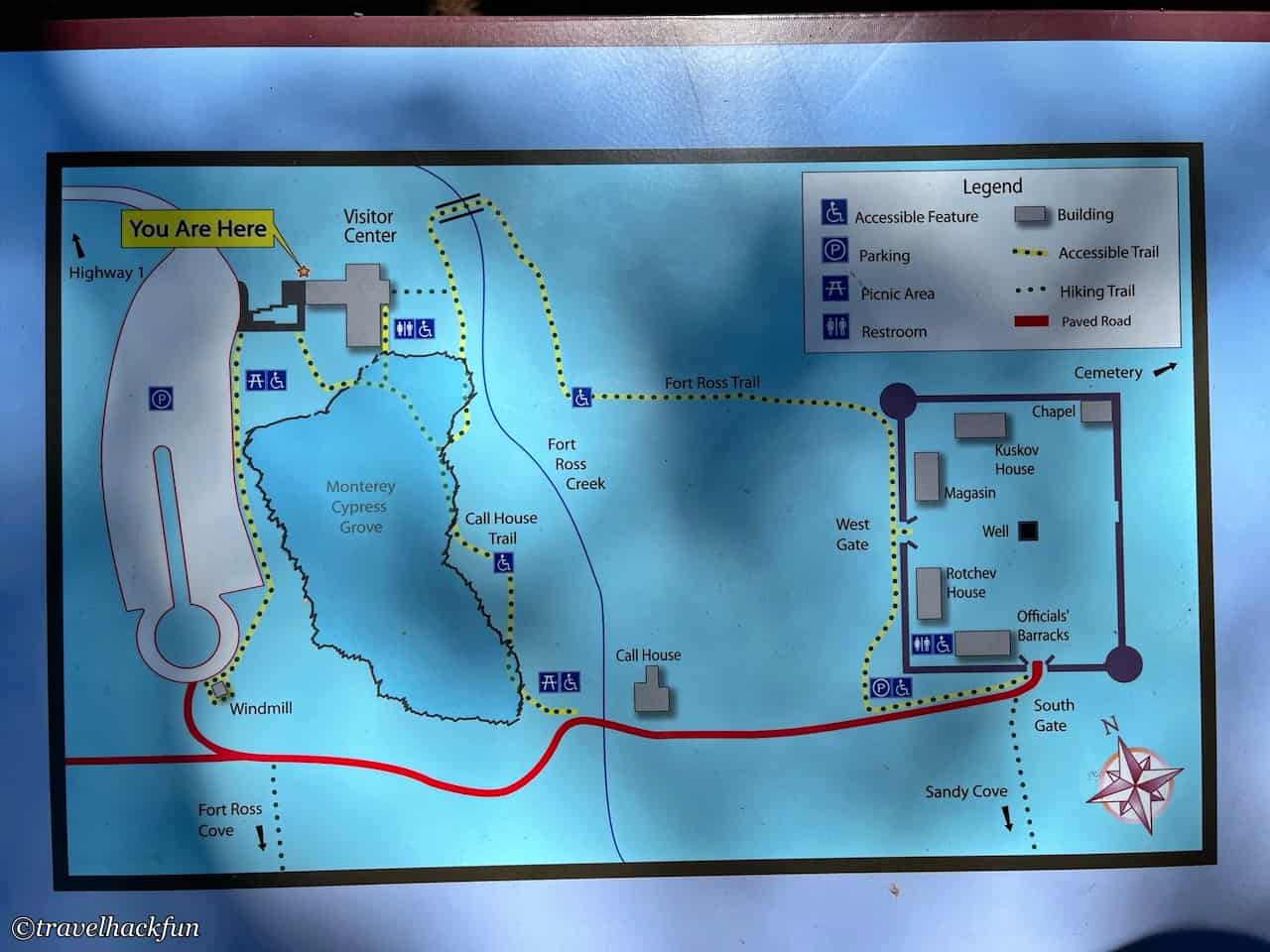
Visitor Center - Fort Ross History Tour
After parking your car, why don't you go into the visitor center to learn more about the history of the area?
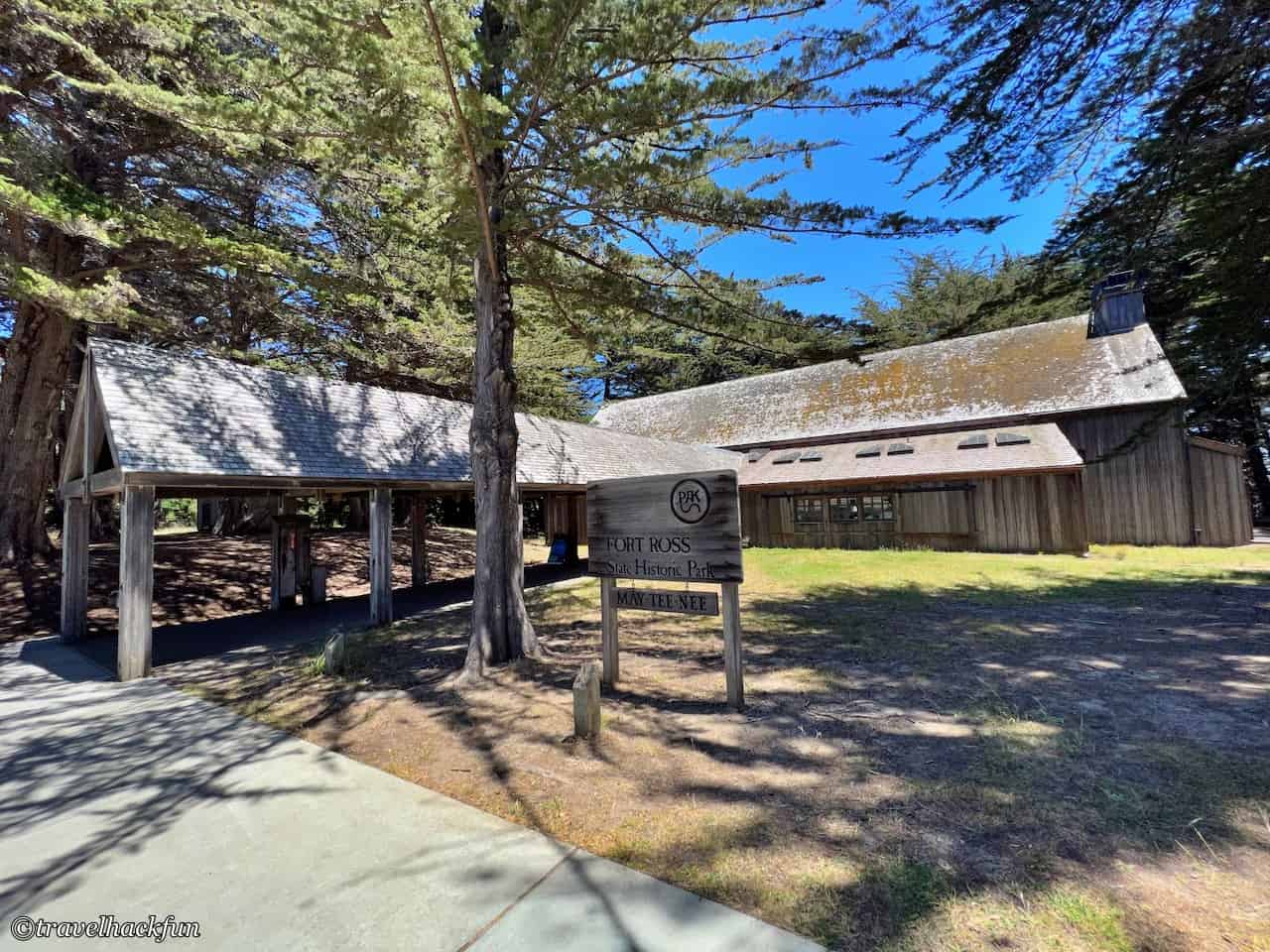
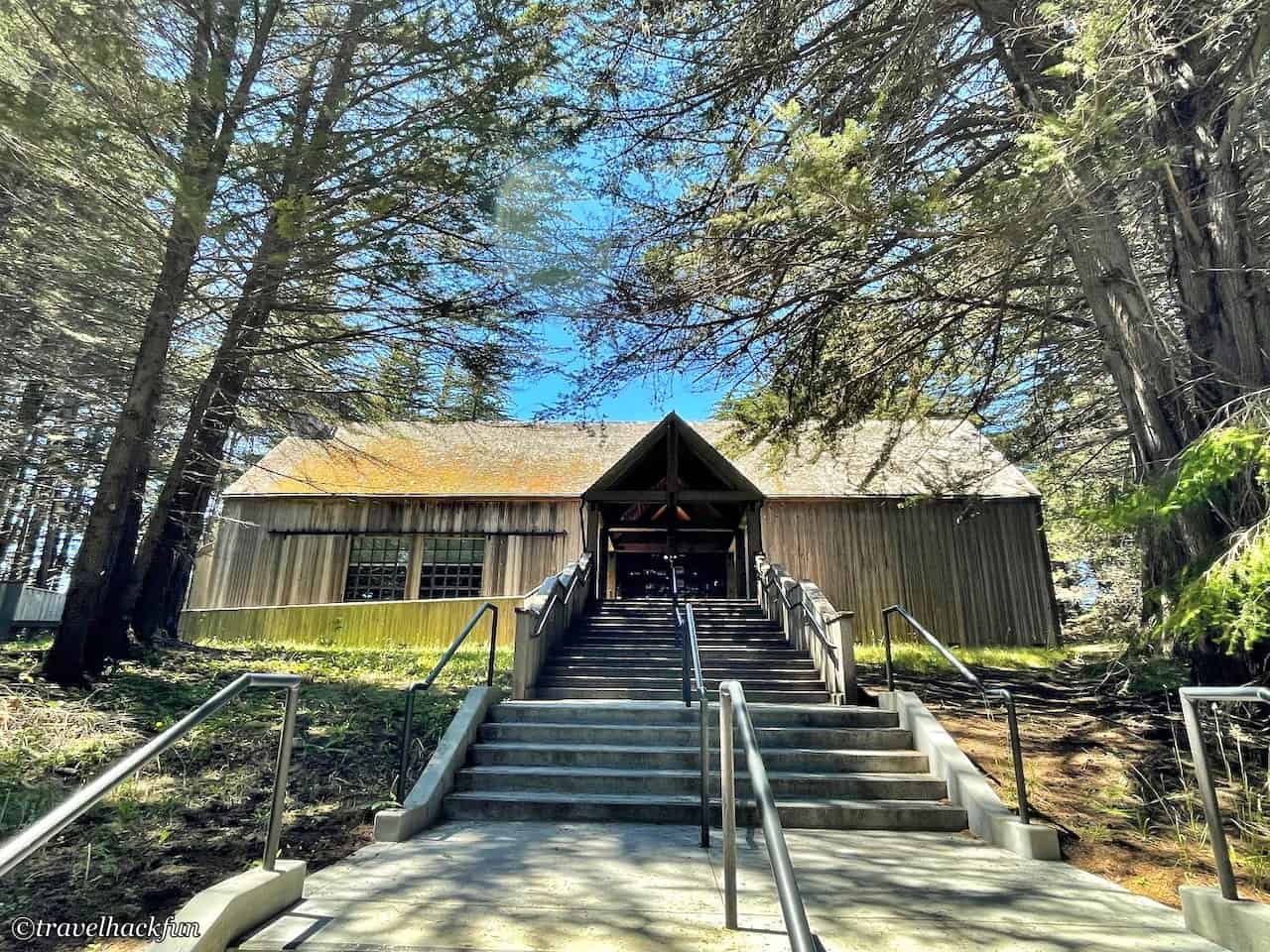
Fort Ross is a culturally diverse place, with different indigenous peoples living here before the Russians arrived. One of them was the Coast Miwak, who lived mainly along the coast and depended on marine resources for their livelihood. The coast here is rich in resources, and they mainly harvest abalone, oysters and other shellfish, or make sea salt to trade with the outside world to fulfill their needs. On the other side of the hill are the Kashaya Pomo.
The Russians came here in 1812. These men were employees of the Russian-American Company, a commercial company at the time, led by Ivan Alexandrovich Kuskov, and were exploring the area primarily for the purpose of fur trading. Fur is highly prized around the world, and the Russians were catching seals on the west coast of the North American continent to make fur, which they could sell at a high price back in Asia. They were originally based in Alaska, but because Alaska was not easy to grow food, life was difficult, and transportation was inconvenient, so Kuskov brought 25 Russians and 80 Alaskan Native craftsmen south to Fort Ross, California, where the company is now based in the southernmost part of North America.
Initially, they planned to settle in Bodega Bay, but since California at that time was primarily a Spanish territory, it was easier to find trouble in Bodega Bay, so they moved north to the present location of Fort Ross. In order to resist the Spanish invasion, he ordered craftsmen to build this Russian-style fort. But apart from the necessary fortifications, the Russians actually got along well with the Aborigines. The Russians only wanted to make money from furs and would not force the missionaries to do so. The craftsmen would make tools that the Aborigines did not have, and they would recruit the Aborigines to come and work in their fields to create jobs and bring in new products, so they all worked together happily, and there was nothing to worry about. In its heyday, there were 260 people of all races living in Fort Ross.
But it didn't last long for the Russians. The production of furs here soon declined due to over-hunting. Within ten years, the fur business was losing money, and by 1840, the company had finally decided to leave. They tried to sell the land to the Mexicans, but were unsuccessful, and finally sold the property to John Sutter, a merchant from Sacramento, in 1841. Sutter's main objective was the remaining moveable property, so he moved the property, cattle, and sheep to his own territory in Sacramento, which changed hands several times, mainly for the timber industry, which was to be operated using the nearby forest resources, so Fernando Fernando was able to sell the property to the Mexicans in 1840. nearby forest resources to operate, so the Fort Ross buildings were left untouched along the way.
The property was last sold to private owners in 1873 by the family of George Call, who, in addition to running the original business, had the idea of converting the Russian buildings into a hotel and using their farm for a tourist business. In addition to their original business, the family also thought of converting the Russian buildings into a hotel and using their farm to run a tourist business. 30 years later, in 1903, the California Historical Landmarks Committee of the State of California purchased the Fort Ross Historic Buildings, which became one of the earliest historic parks in the State of California. Fort Ross became one of the first historic parks in California.
Fort Ross
Stockade walls
Walking up the Fort Ross Trail from the back of the Visitor Center, you can see the Stockade walls, which were built by the Russians as a defense to avoid being harassed by the Spaniards. At that time, those who lived inside the walls were purebred or mixed race Russians, while the Alaskan craftsmen actually lived outside the walls. On the Fort Ross Trail, we can still see a small orchard and a large grassy area. After all, people used to try to develop a little bit of agriculture here to grow crops and raise cattle and sheep.
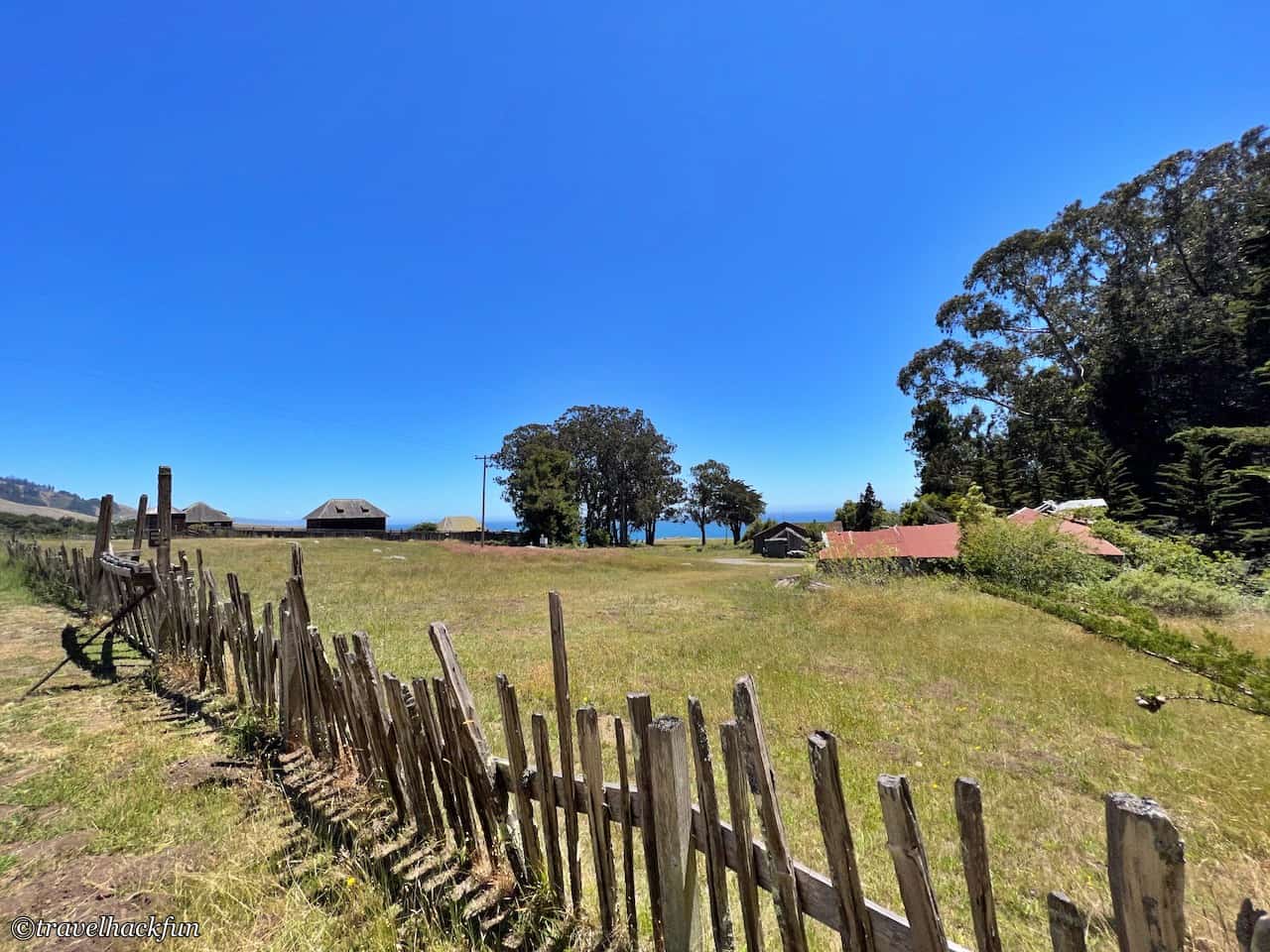
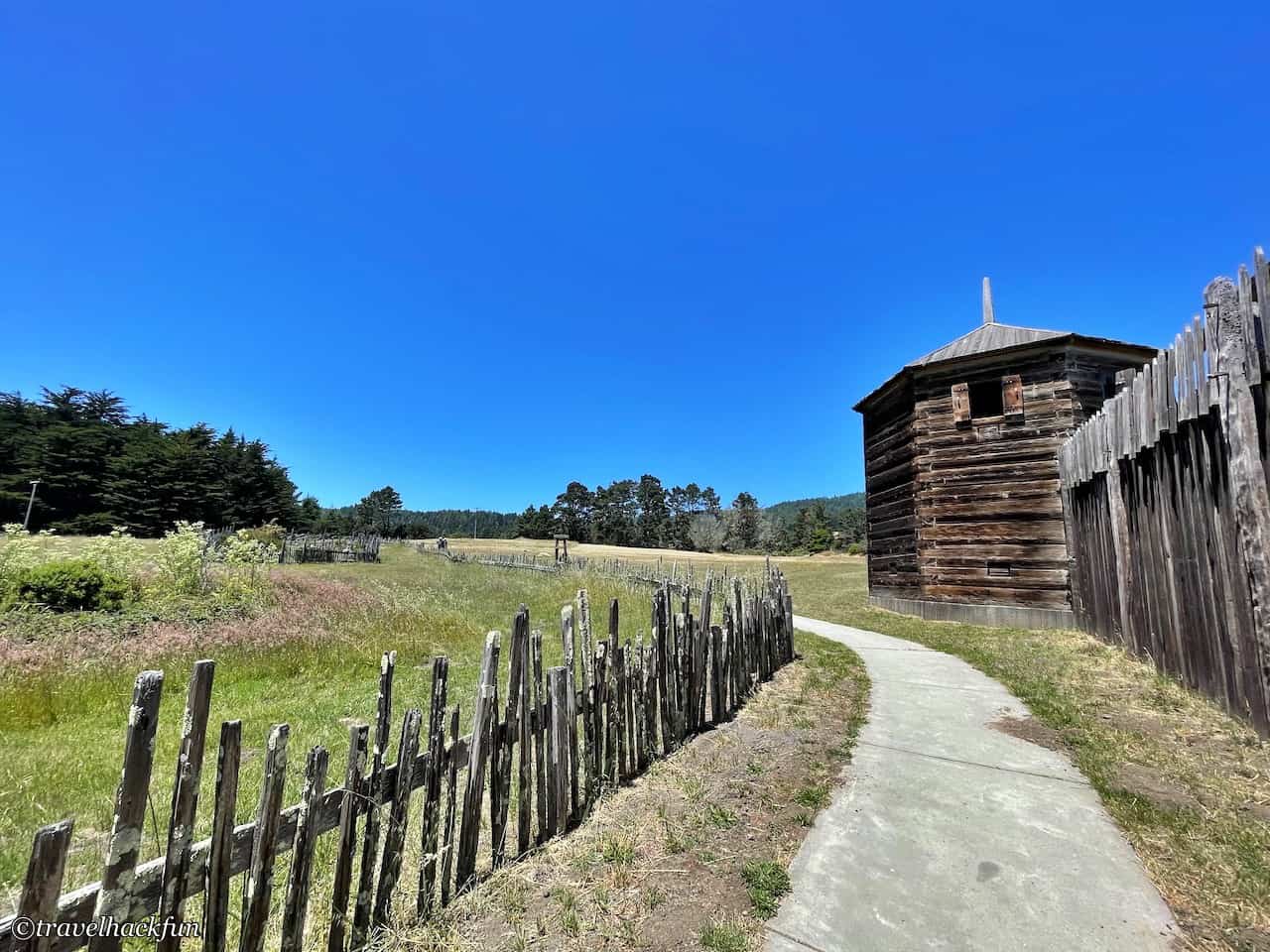
![[Northern California Historic Sites] Fort Ross State Historic Park | Russian Fortress on the Sonoma Coast | California's First Windmill | The Day California Was Colonized by Russia? 6 fort ross, fort ross, fort ross state park, fort ross state historic park, fort ross california 6](https://blog.travelhackfun.com/wp-content/uploads/2022/07/batch_IMG_6336.jpg)
![[Northern California Historic Sites] Fort Ross State Historic Park | Russian Fortresses on the Sonoma Coast | California's First Windmill | The Day California Was Colonized by Russia? 7 Fort Ross State Historic Park Fort Ross, Russia](https://blog.travelhackfun.com/wp-content/uploads/2022/07/batch_IMG_8137.jpg)
Fort Ross Well
In the center of the square was an old well. In fact, there is a stream in the vicinity that can be used for drinking, and the main reason why a well must be built in the center of the square is that if someone really comes to attack, there will not be no water to use.

Blockhouses
The northwest and southeast ends of Fort Ross each have a Blockhouse, which has the functions of a lookout and a cannon, what we see on the Fort Ross trail is a heptagonal Blockhouse in the northwest, and there is another octagonal Blockhouse in the southeast. From these two blockhouses, we can also see the whole village and the beautiful Sandy Cove outside.
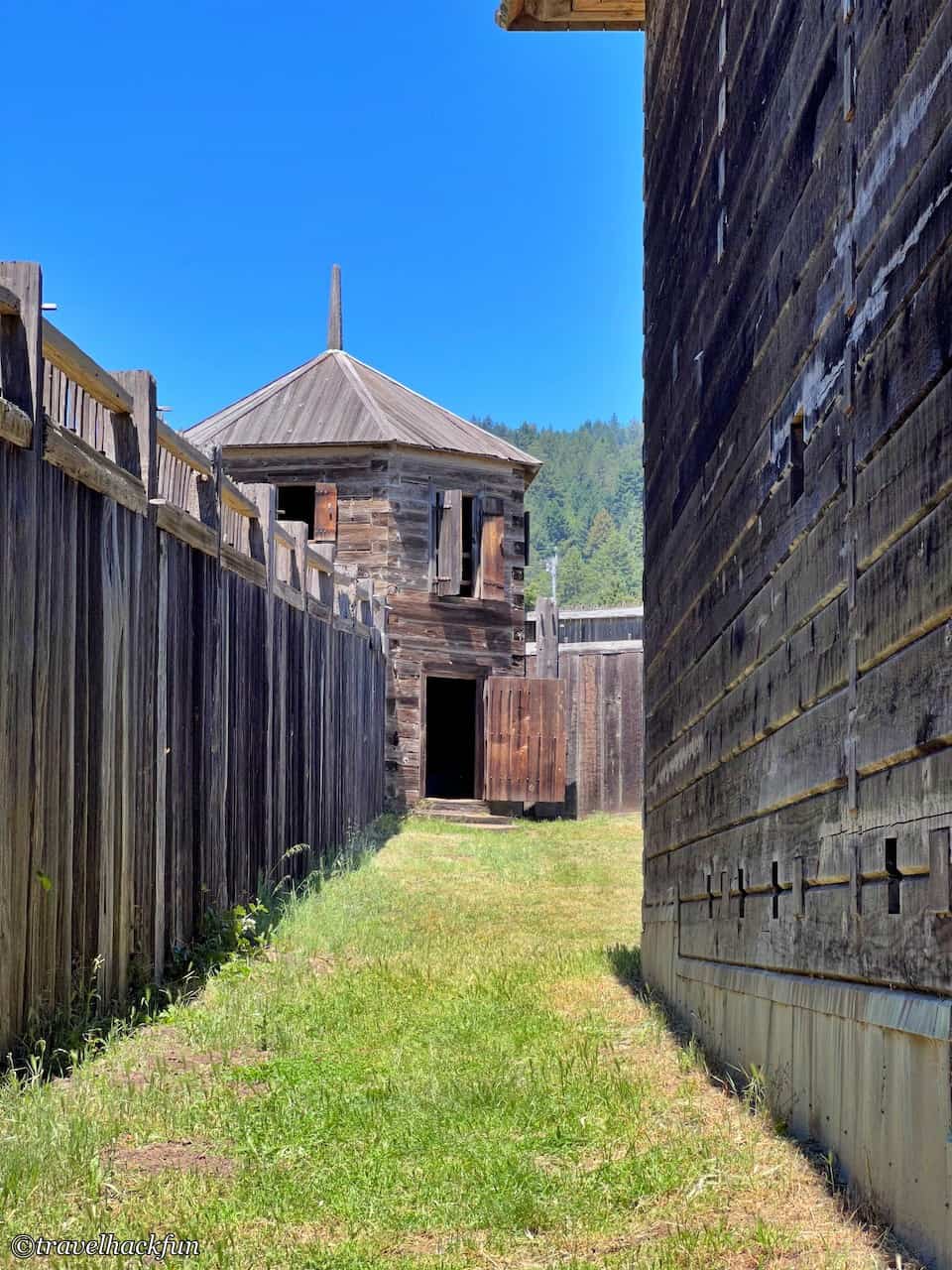
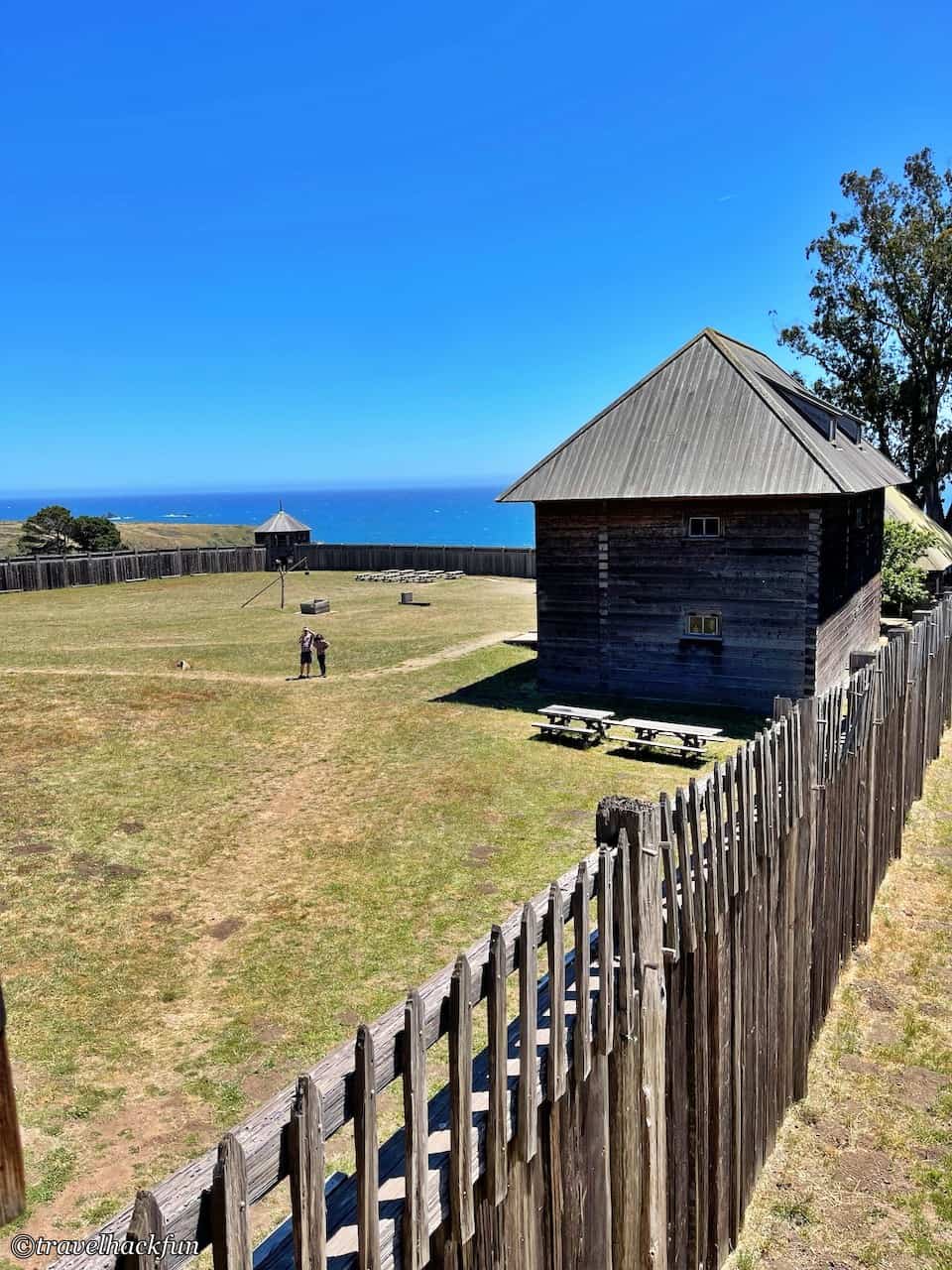
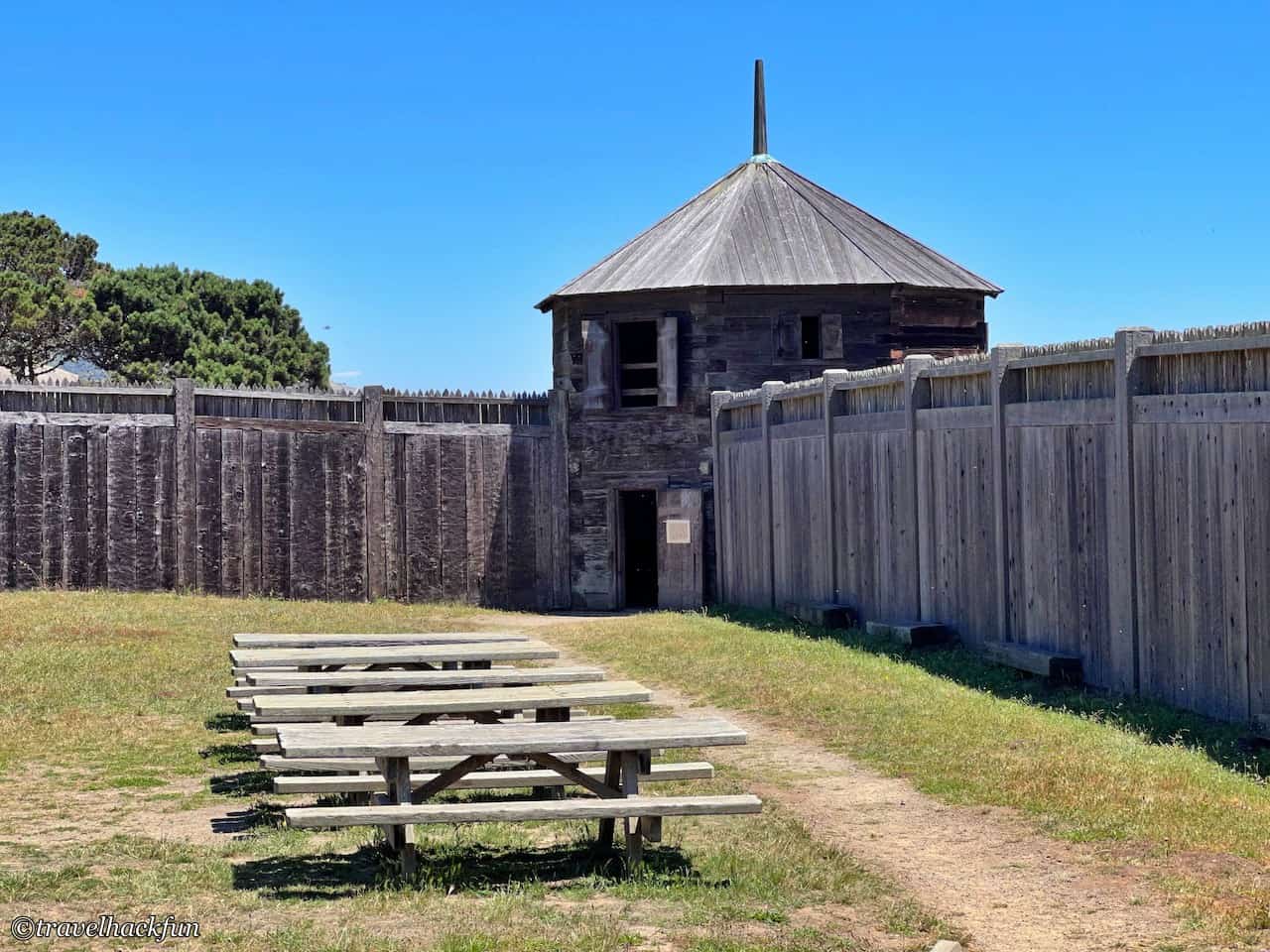
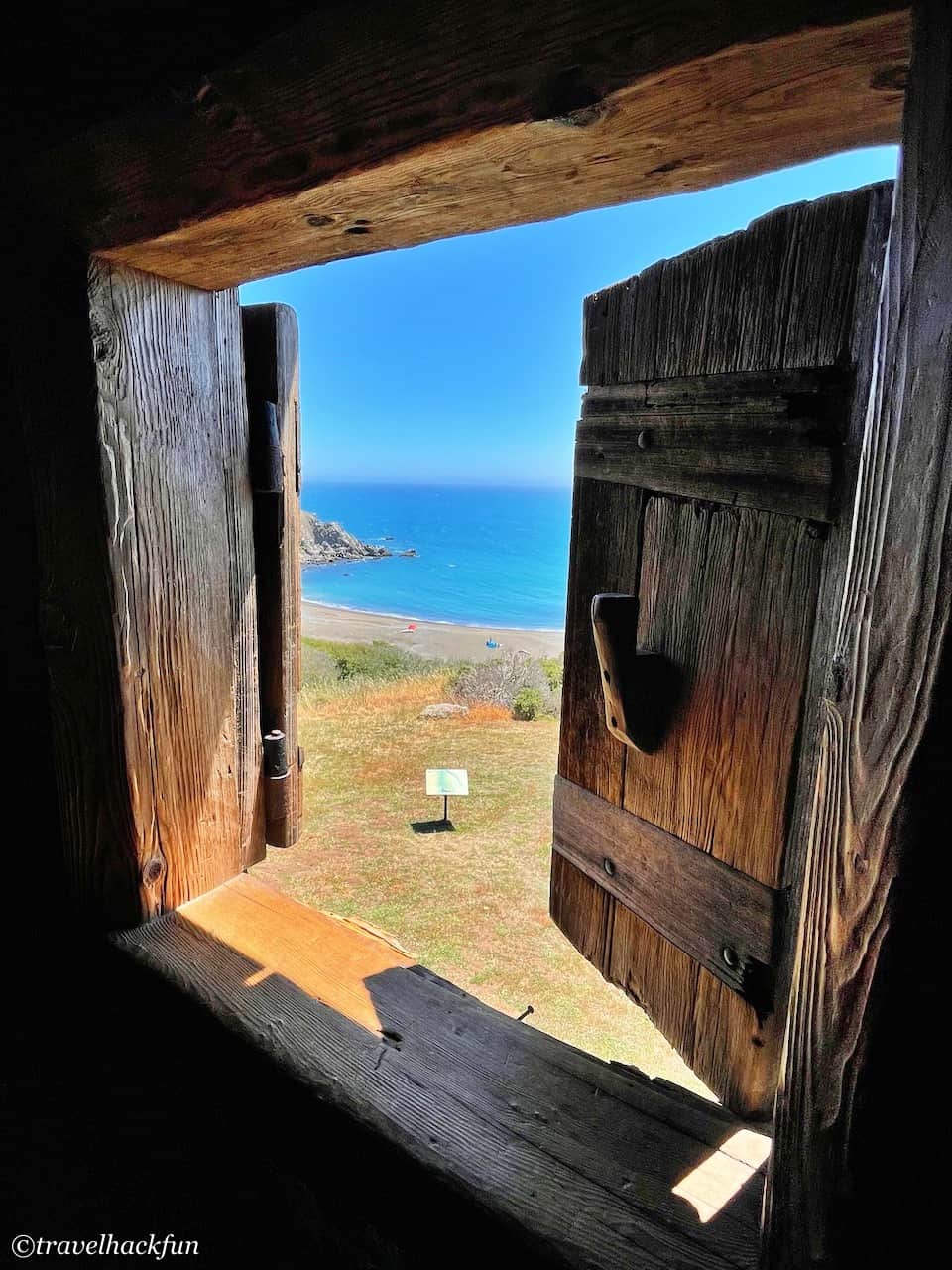
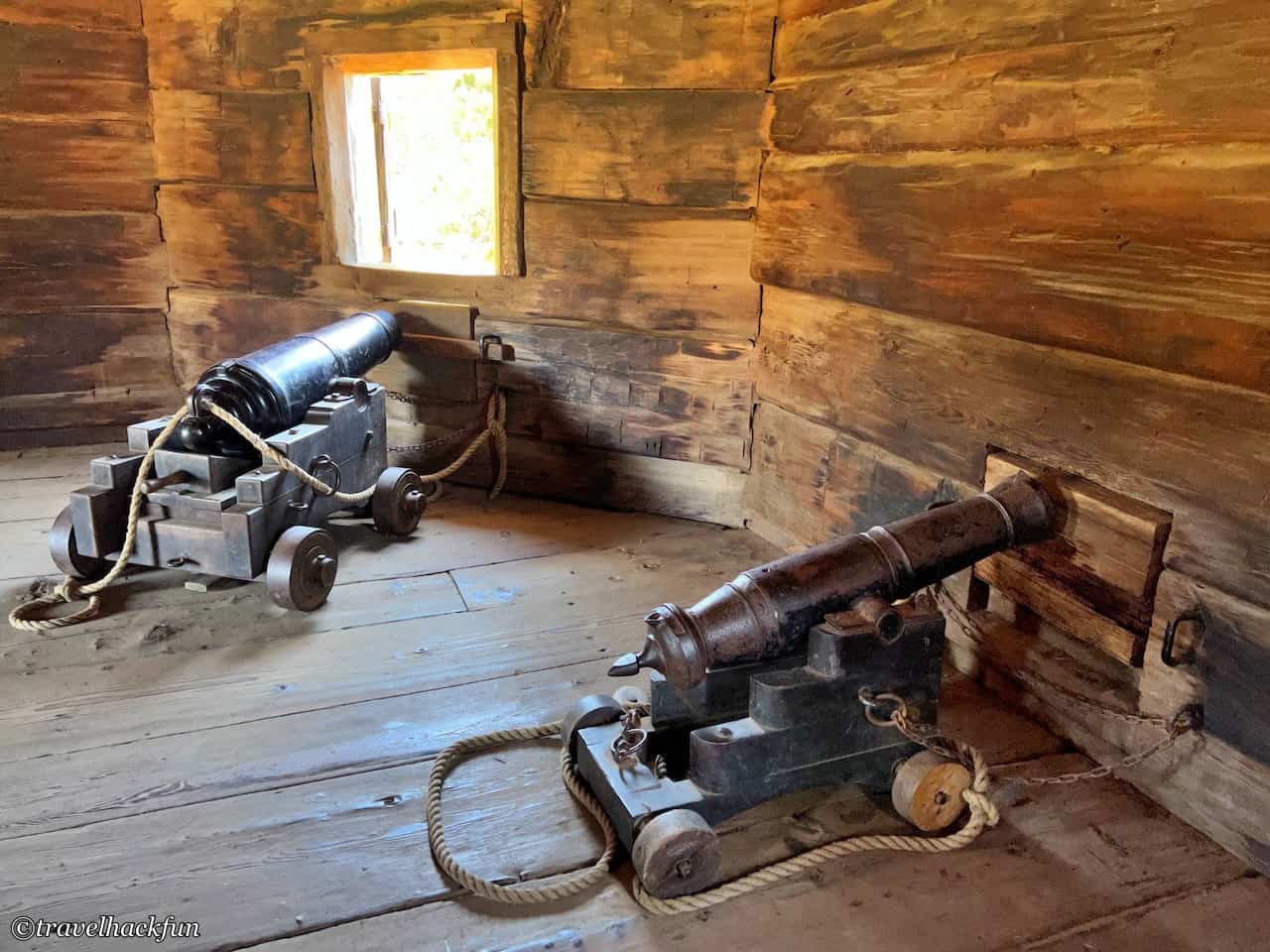
The Rotchev House
The Rotchev House is the only original Fort Ross building in existence, and one of only four remaining buildings from the Russian colonization of North America, the other three being in Alaska; the other Fort Ross buildings were all destroyed and rebuilt during the San Francisco earthquake. This house was built in 1836 to house the family of Alexandar Rotchev, the last administrator of the Russian-American company, whose wife, Elena, was a Russian aristocrat, fluent in French and played the piano, and who was praised by Europeans for her rare cultural qualities when they visited the house. We can still see Elena playing Mozart's piano when the French came to visit.
The interior of the house is actually quite simple, with only three rooms. It is said that the Call family moved out because of the limited space here, and this side of the house has been converted into a guesthouse.
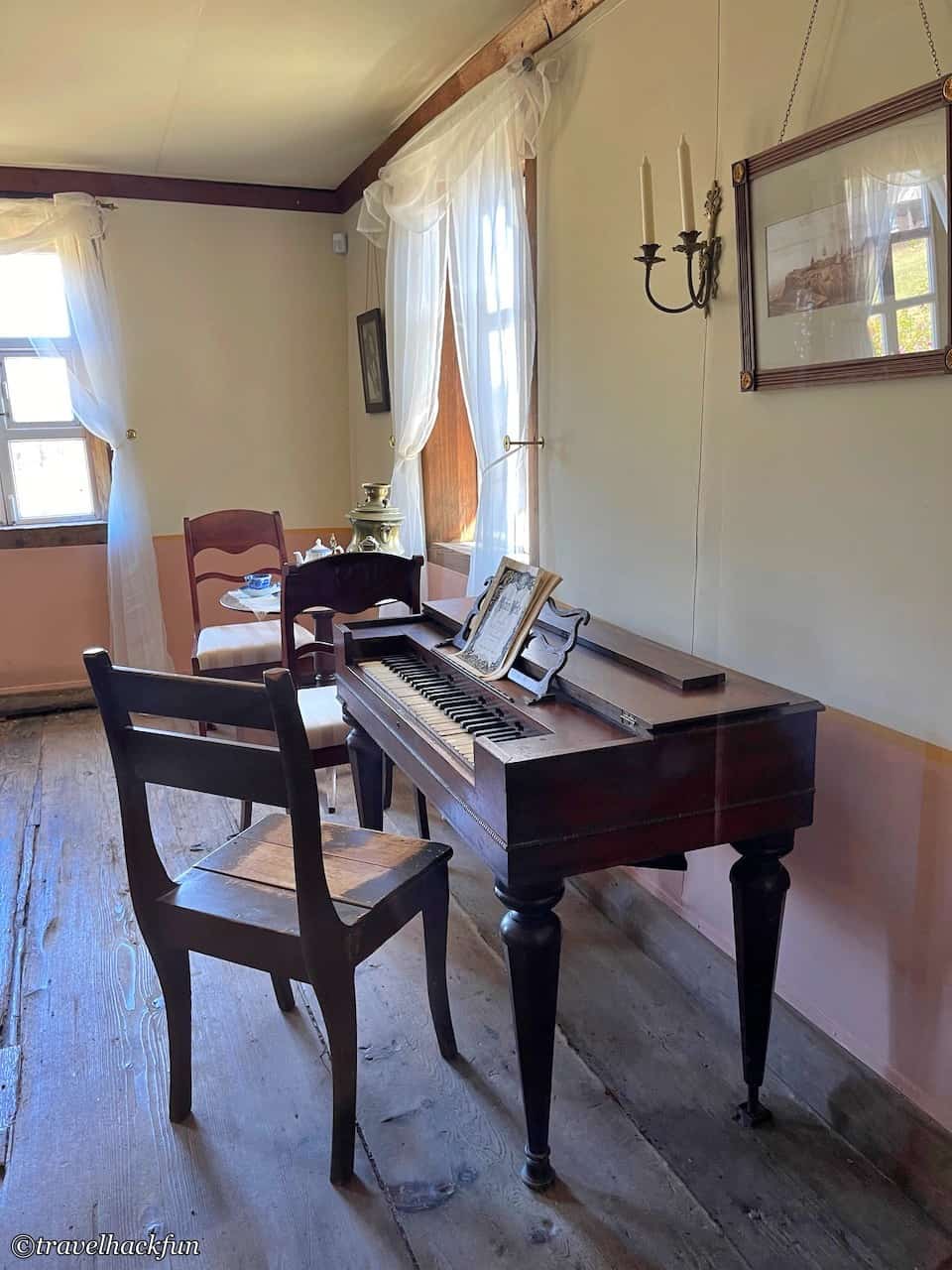
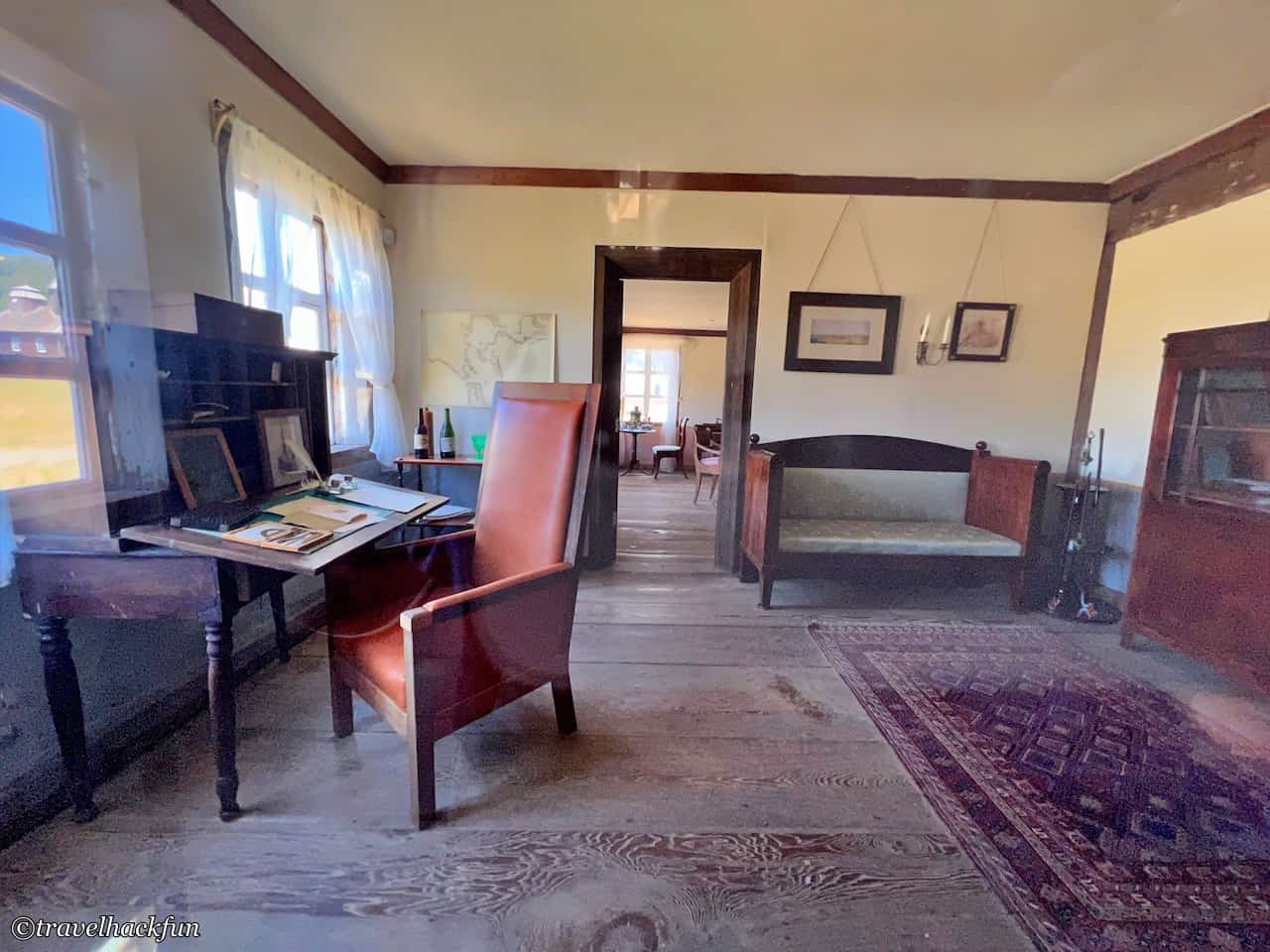
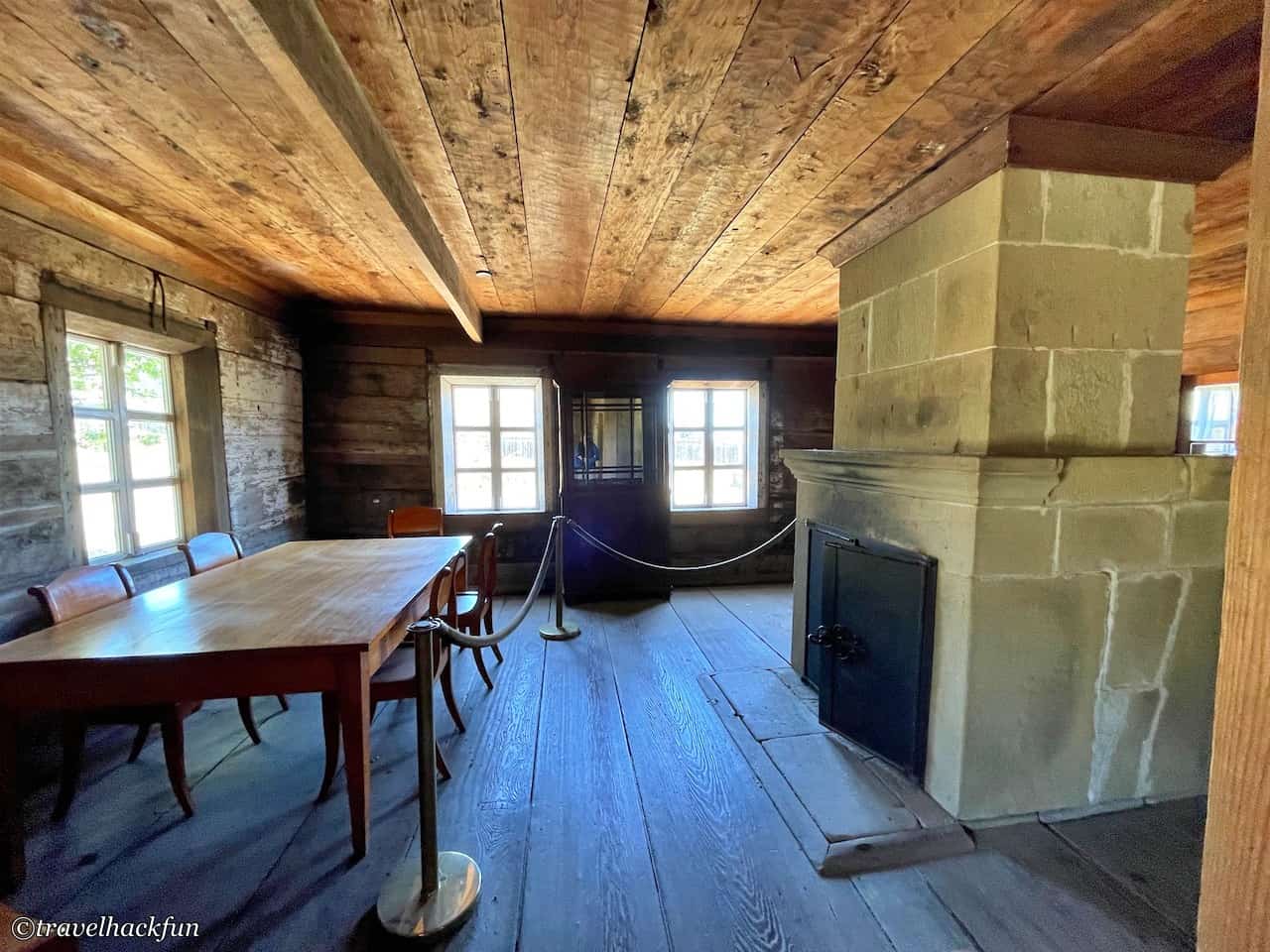
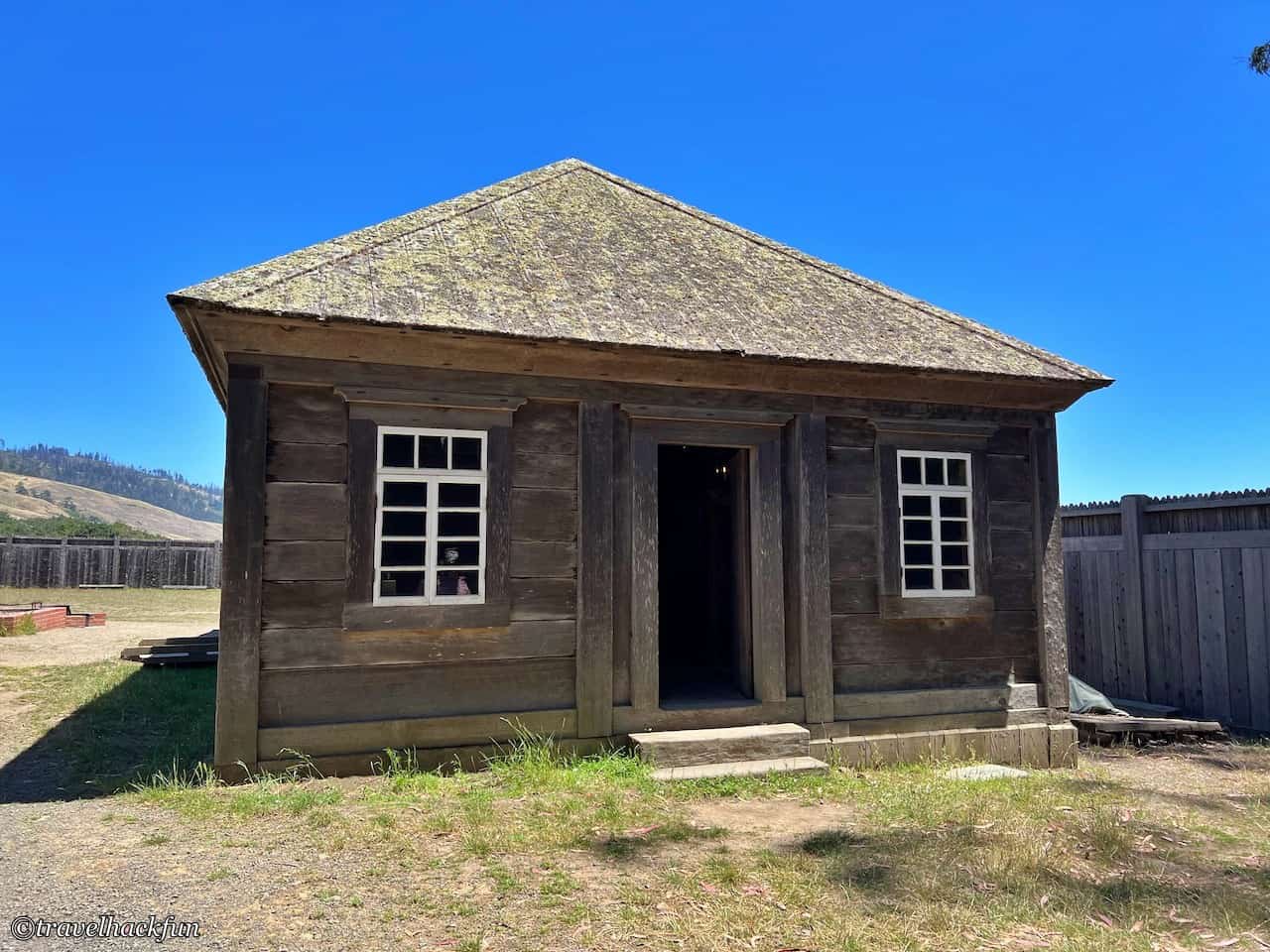

Official's Barracks
This is the workshop used by the Russian-American company in 1817. Inside we can see the iron and leather making workshop for the 24 Russian craftsmen of the time. Outside, there is a public area with a barbecue grill, etc., which seems to be used every year when the Fort Ross Festival is held.
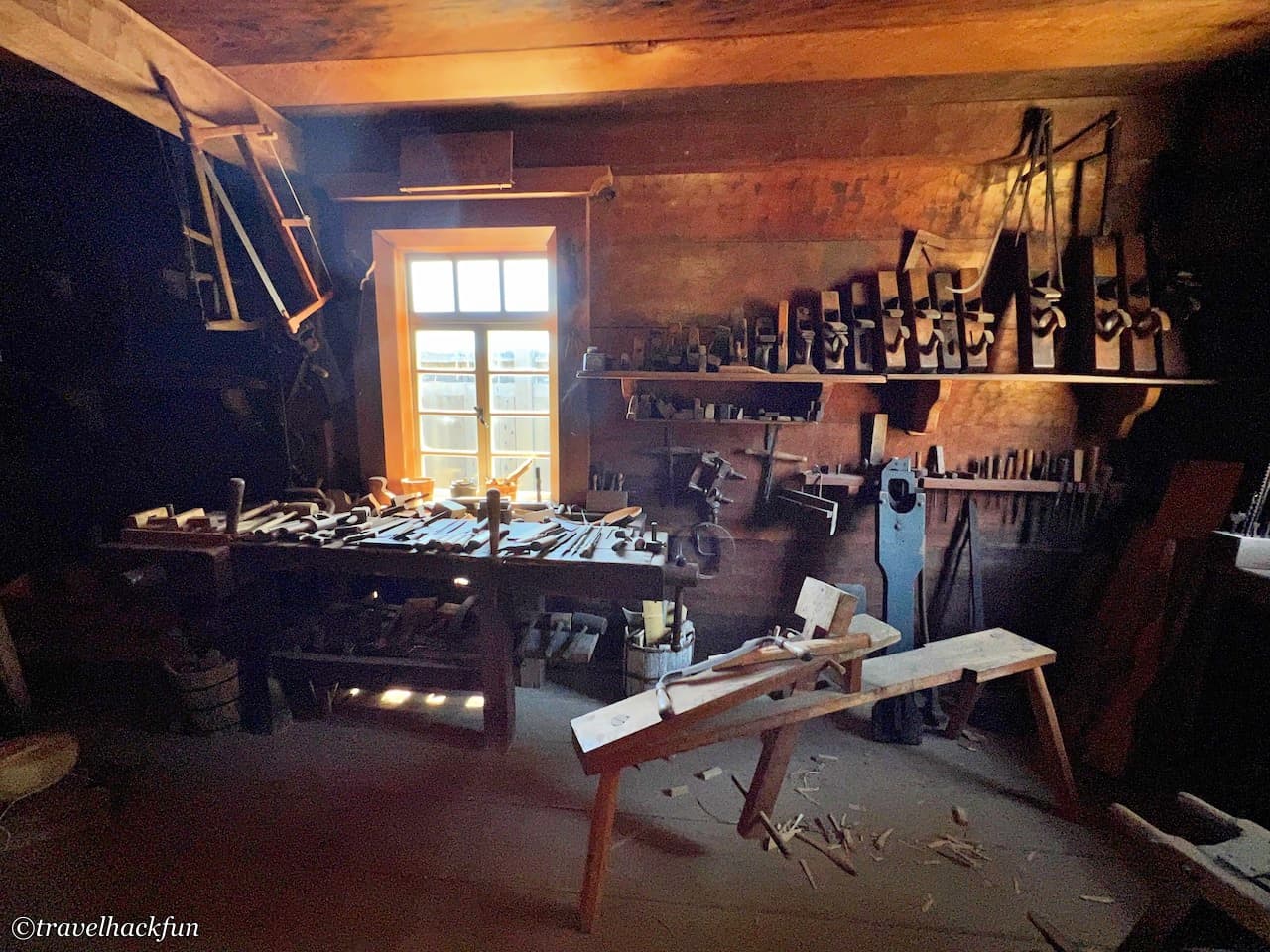
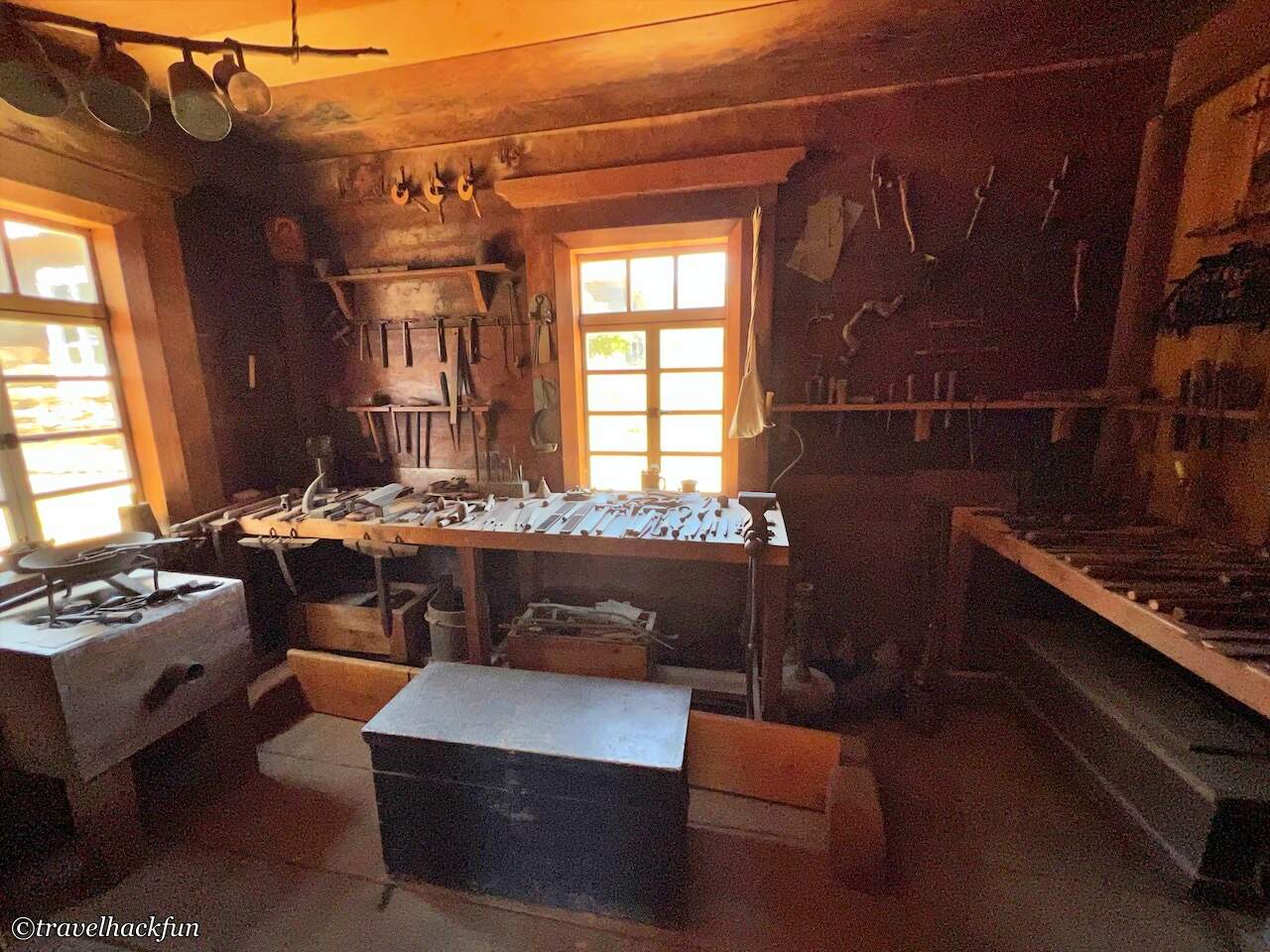
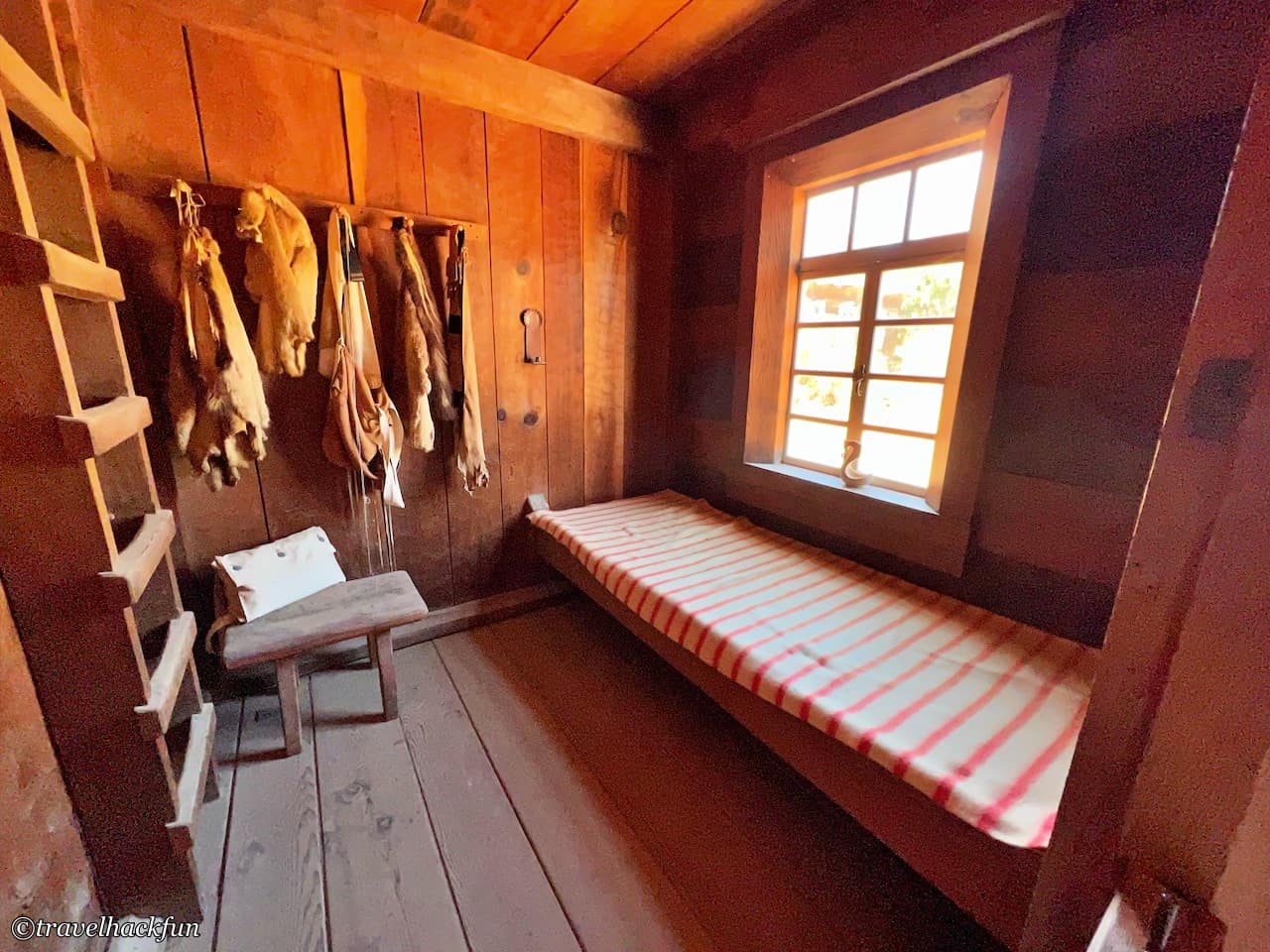
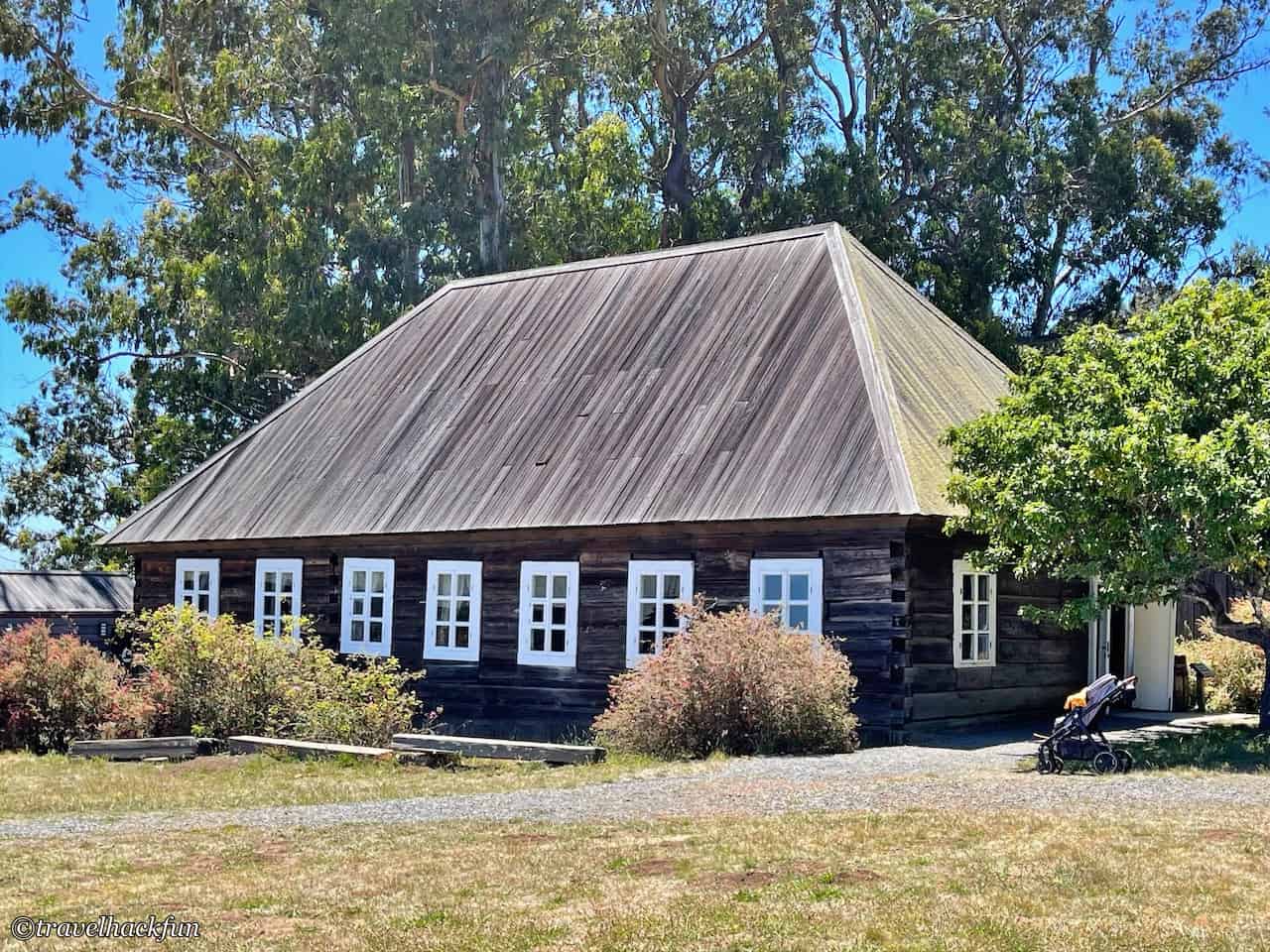

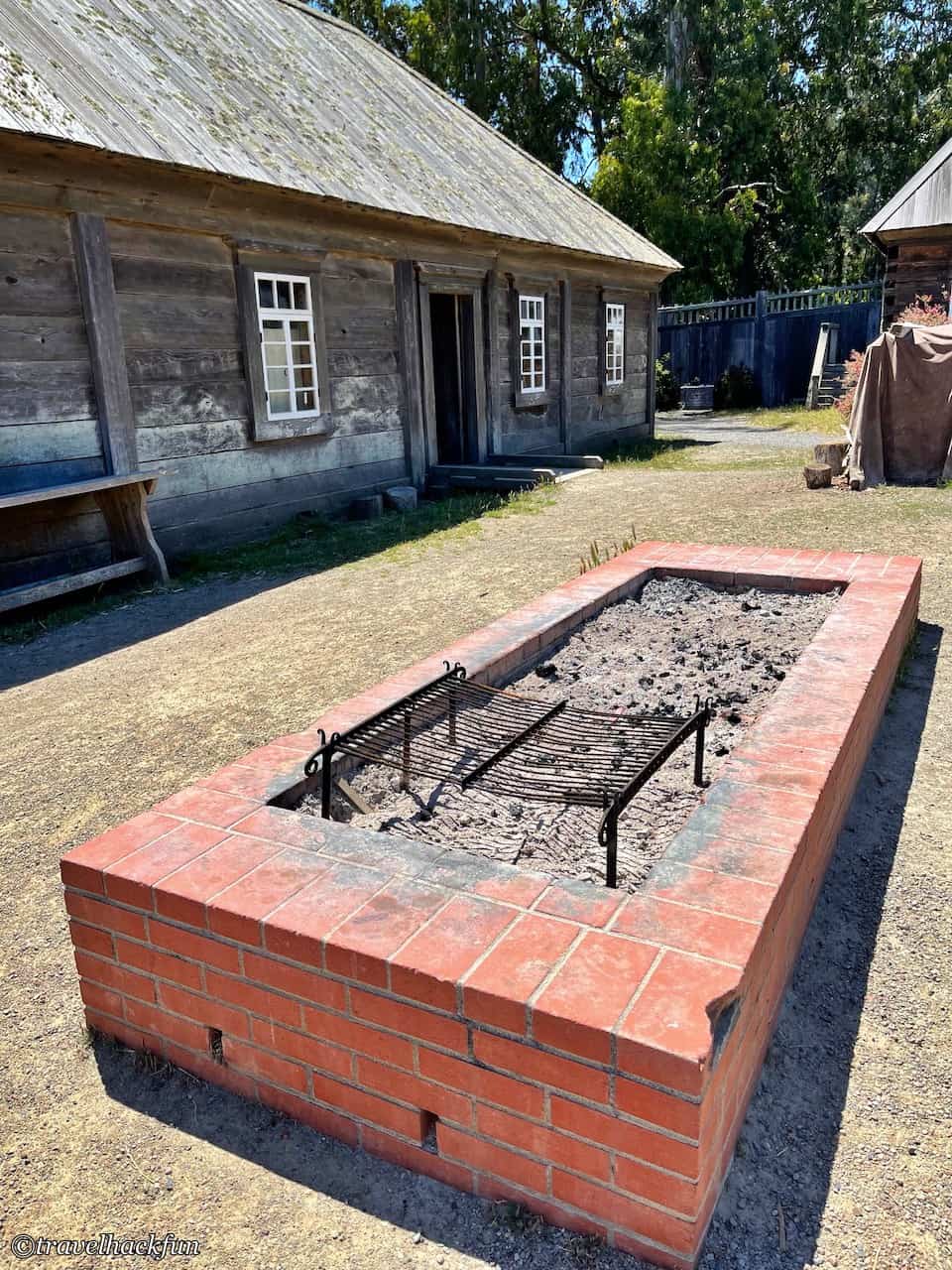
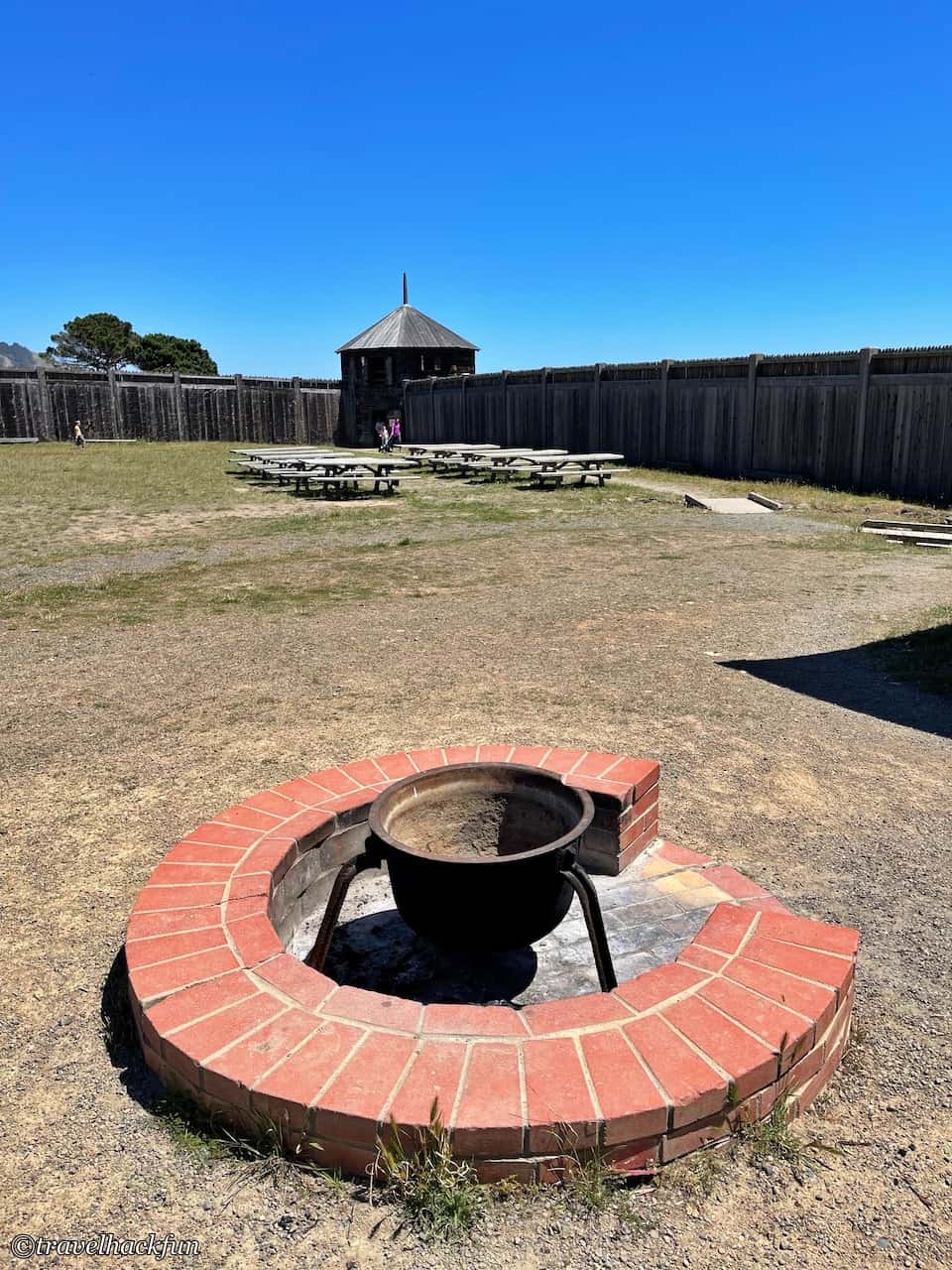
Orthodox Church
On the northeastern hillside, this small, lovely church was the first Russian Orthodox church in North America outside of Alaska, originally built in 1825. On the way to the church entrance you can see the Fort Ross Battery in the center of the church, which is said to have been used only for celebrations and had no real military use. Outside the church there is a bell that almost every visitor rings, and it is very loud. Inside is a small pulpit for preaching.


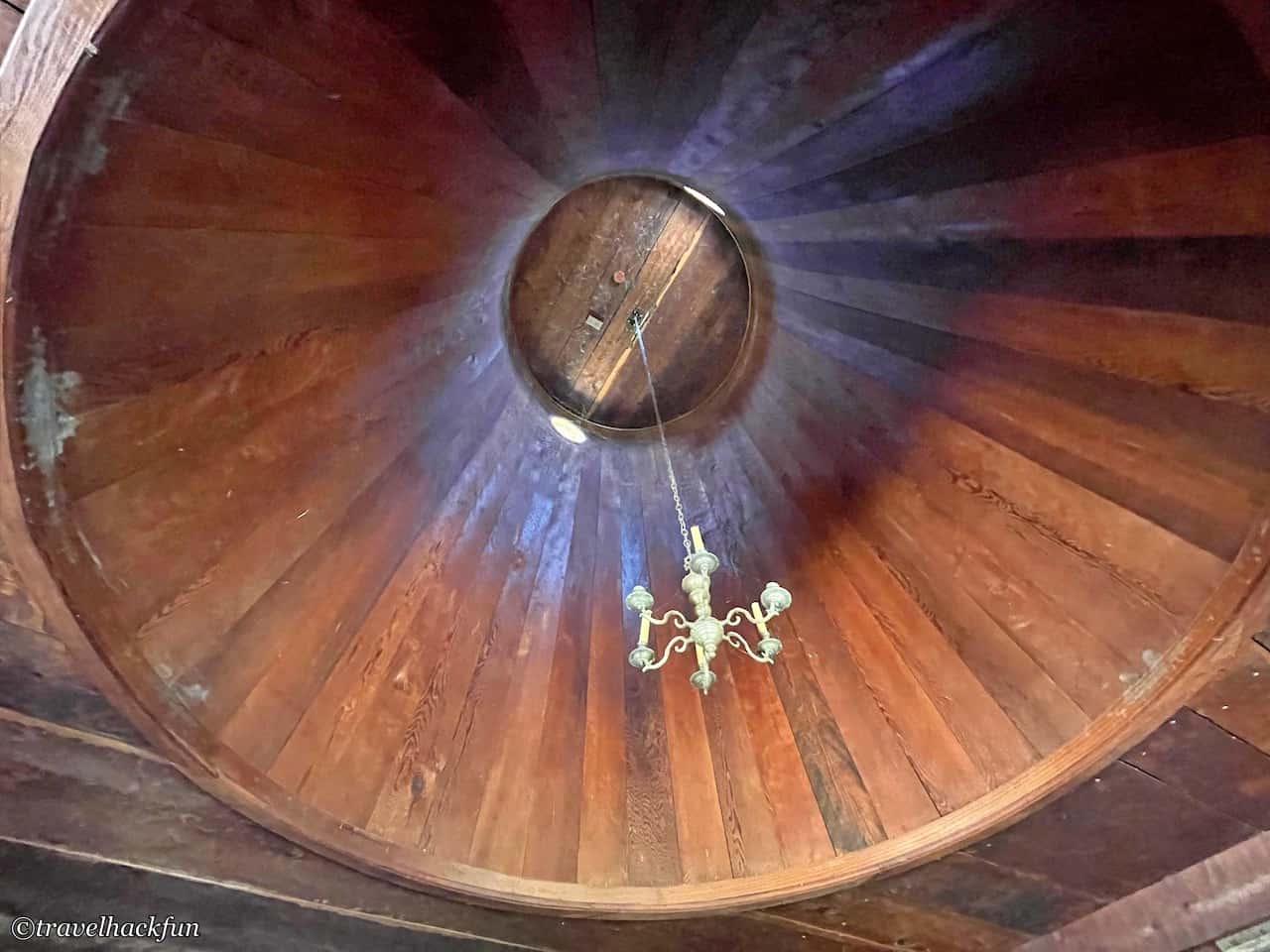
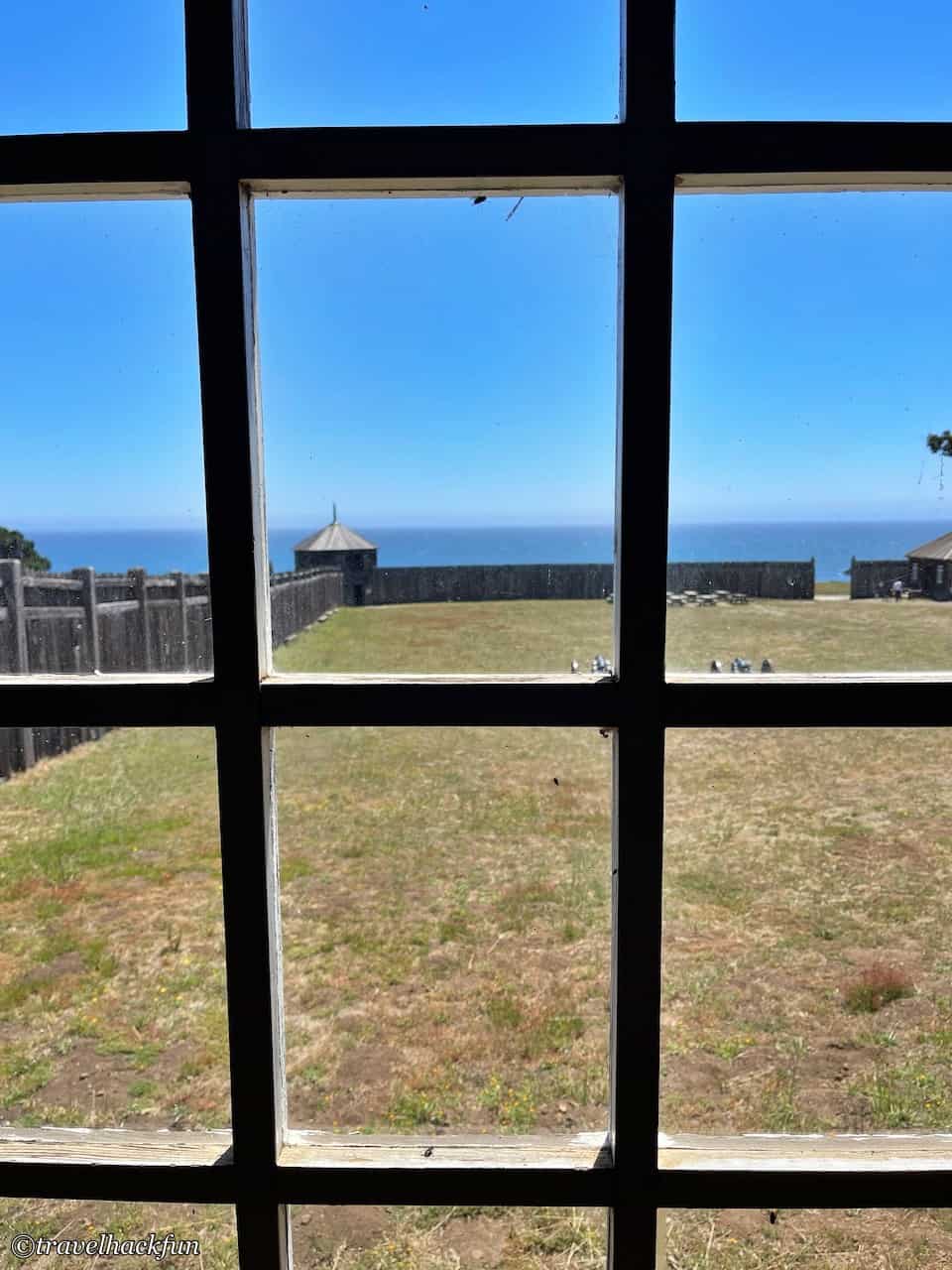
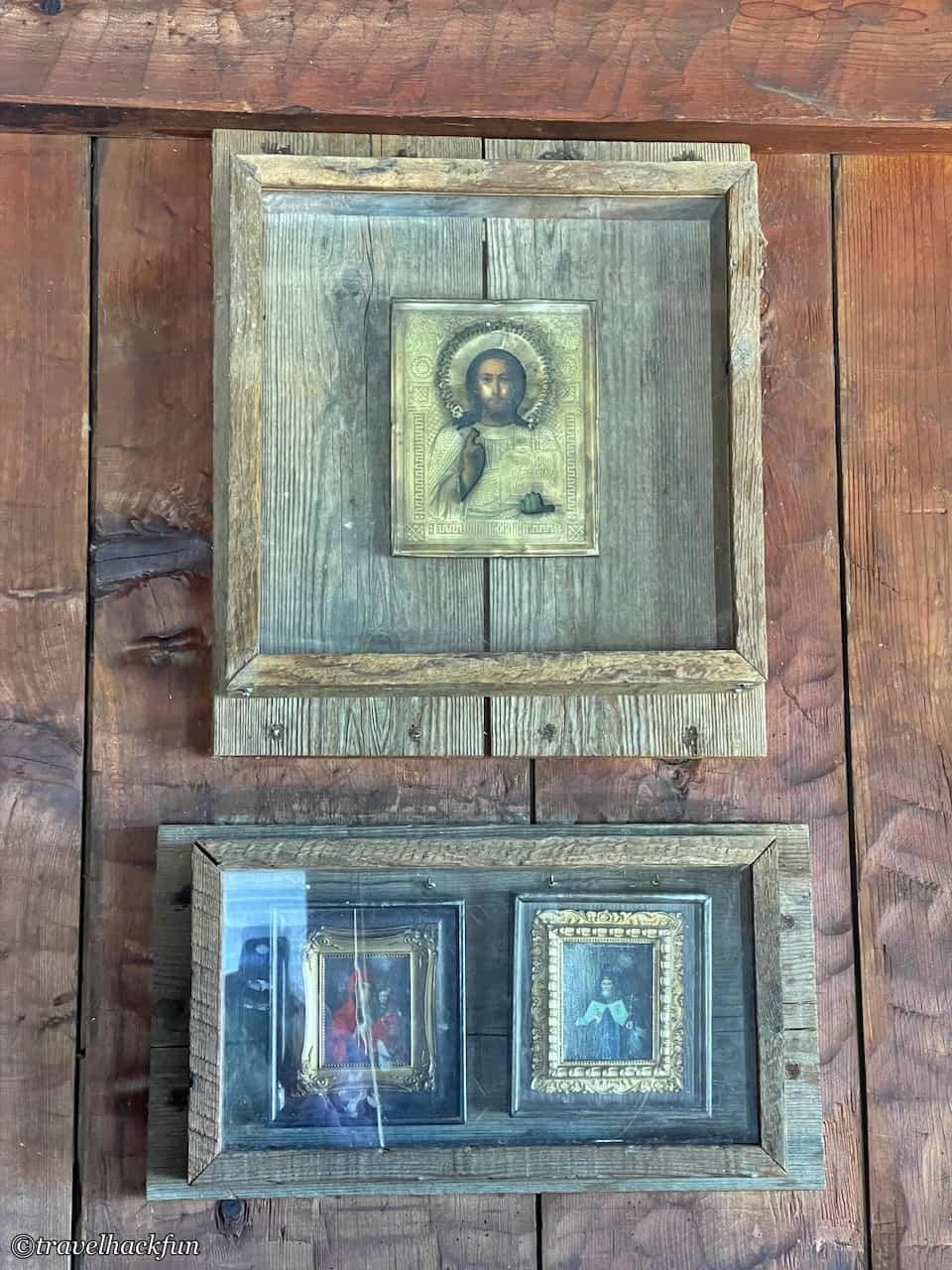
Kuskov House
The Kuskov house is the largest building in Fort Ross, opposite the main entrance to the church, and has the most magnificent interior, originally belonging to the first administrator, Ivan Alexandrovich Kuskov. In fact, it was the first house in California to have glass windows, which in the nineteenth century would have been considered very high class. The importance of defense for the early Russian settlers can still be seen here. The house has two floors, with an arsenal downstairs, and although the upstairs is a living space, the staircase upstairs still has two doors that can be closed to defend against an attack from below.

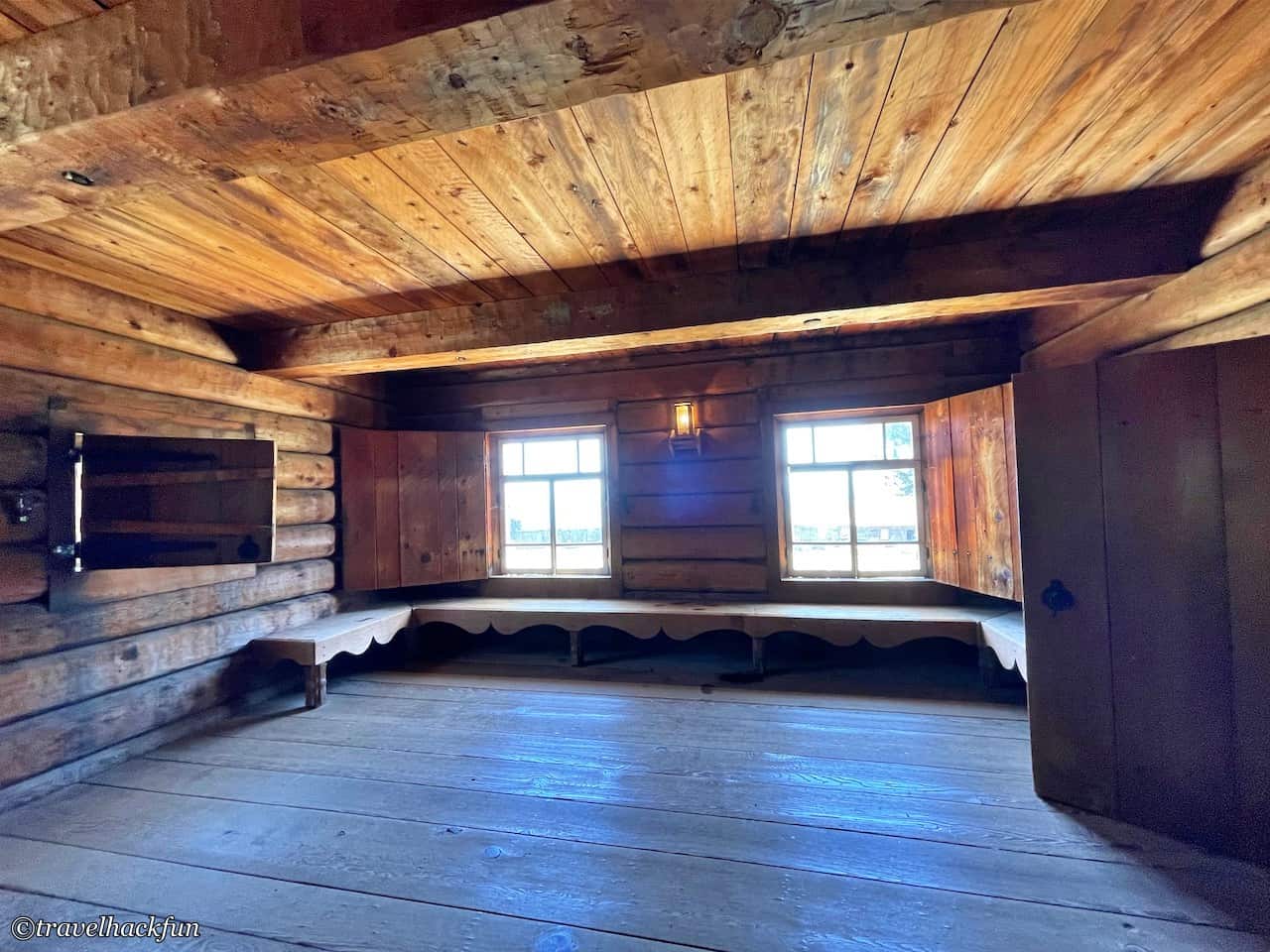
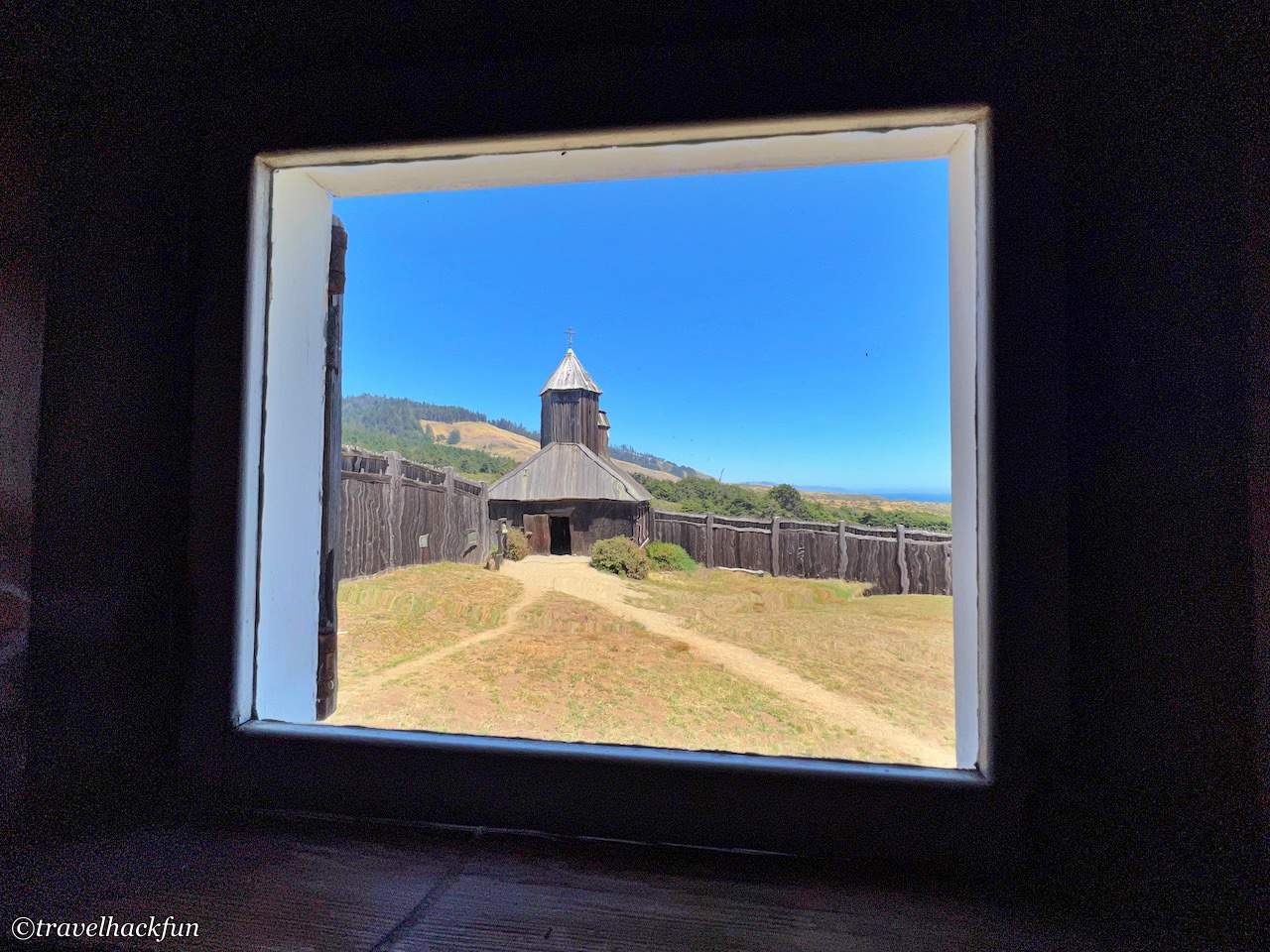
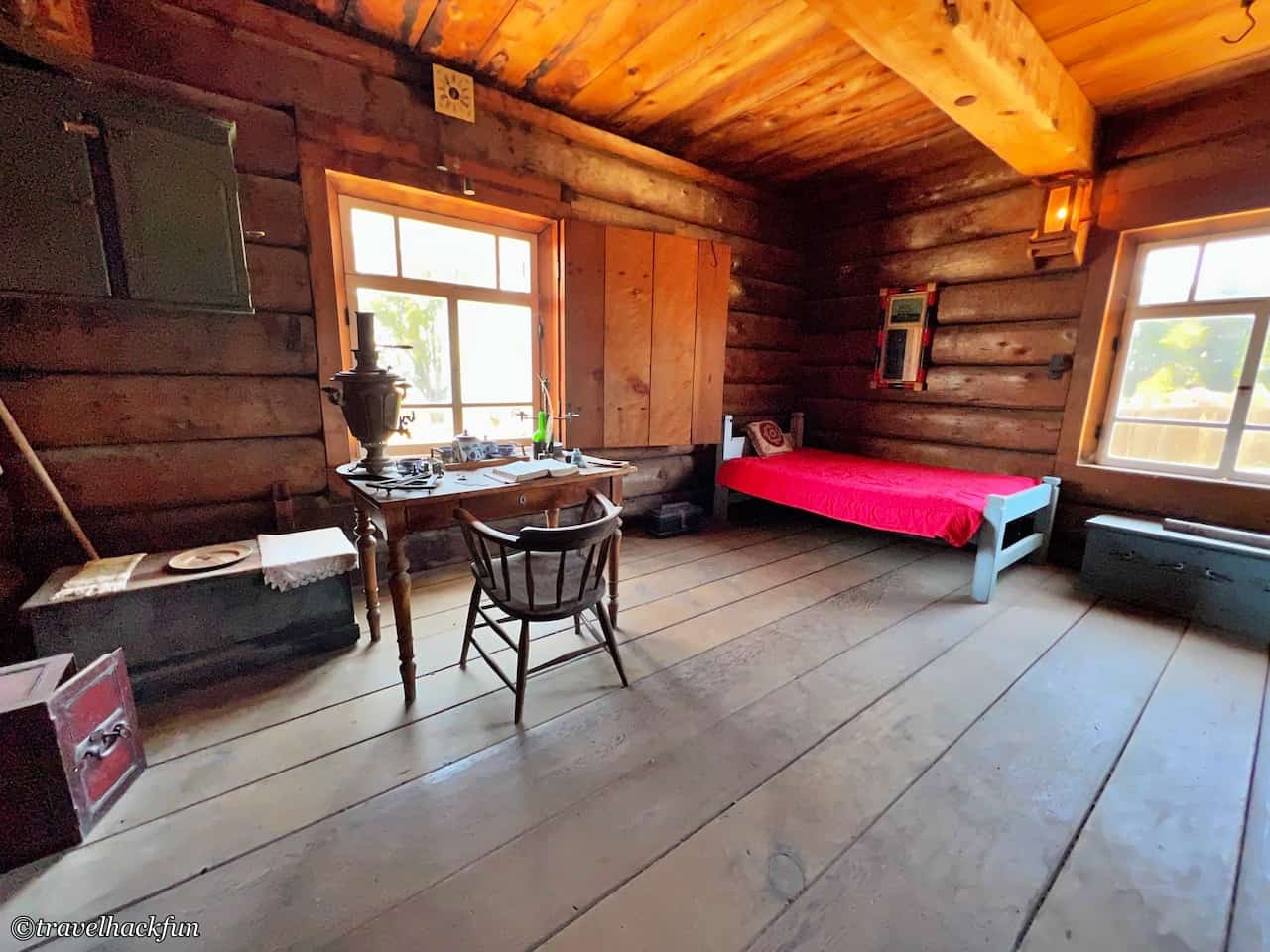
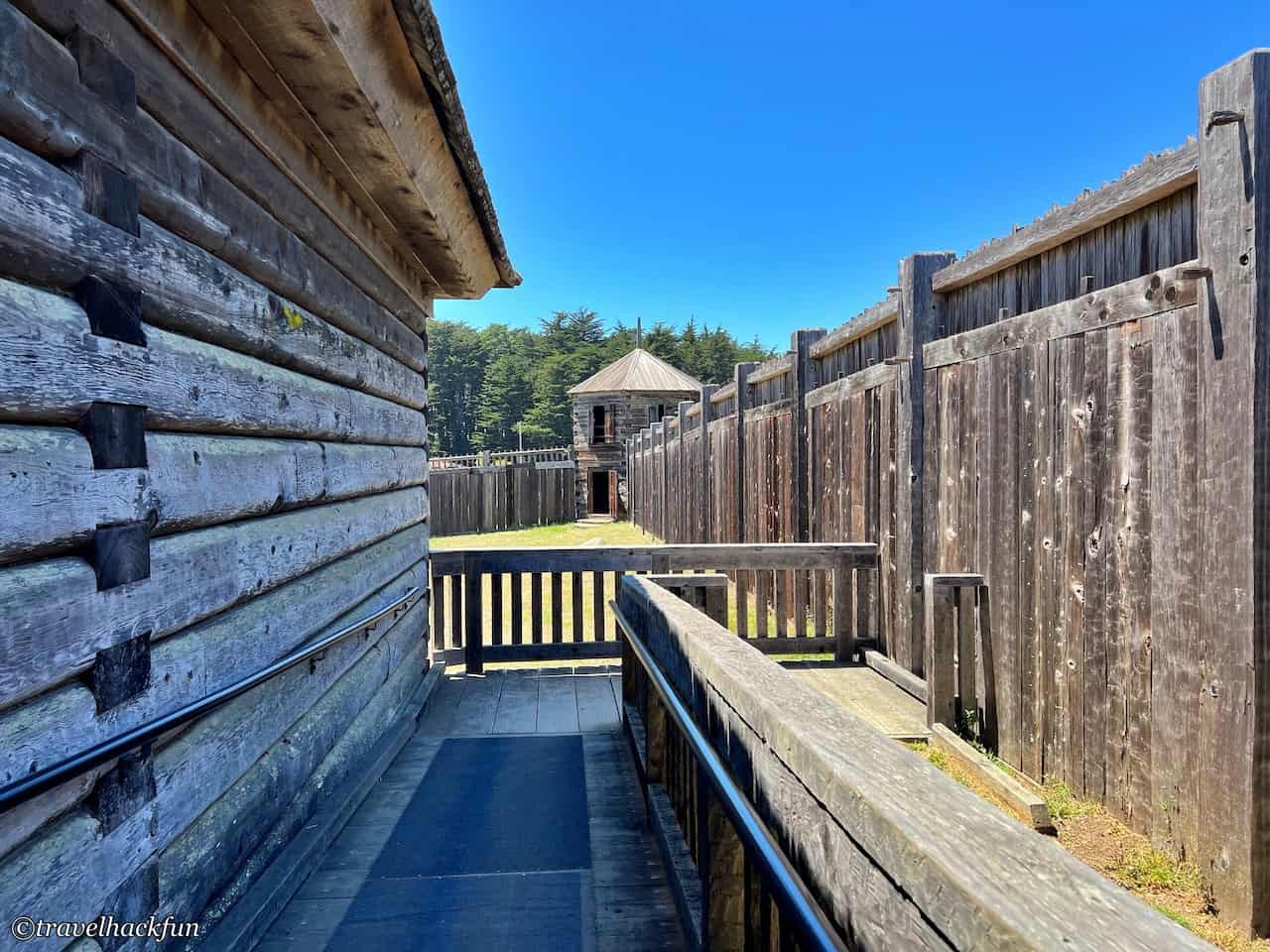
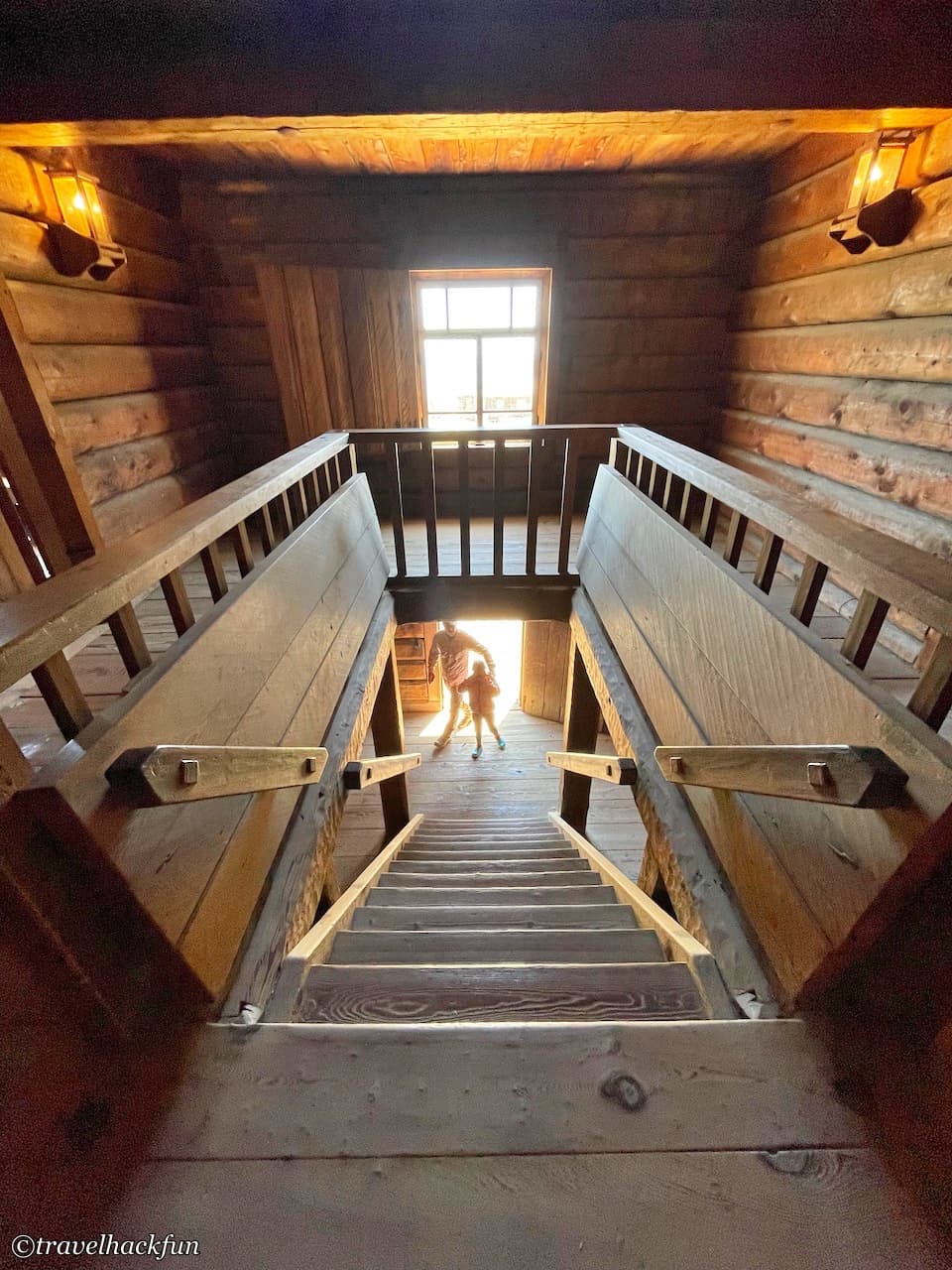

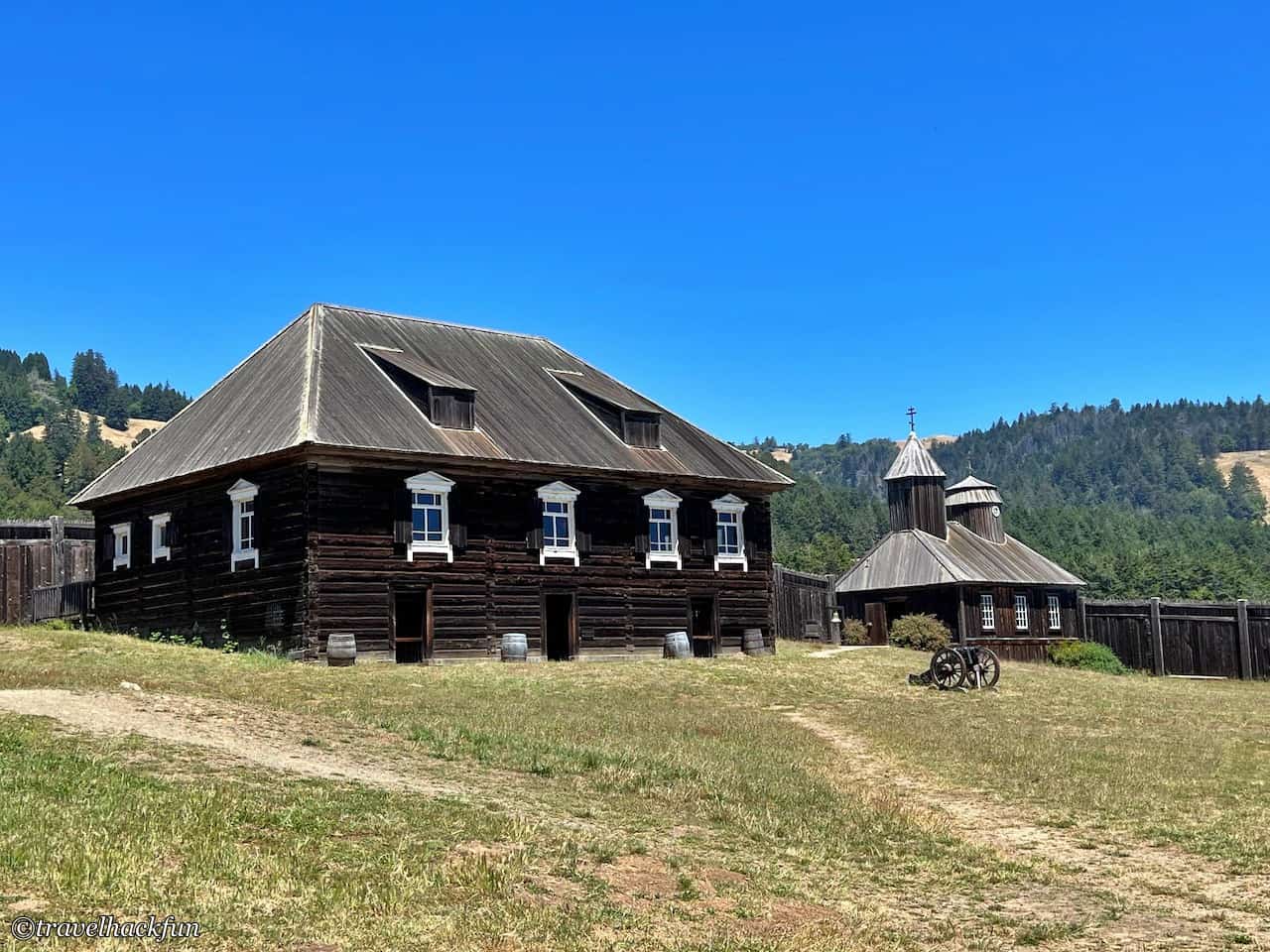
Magasin
The other huge building is not open to the public. It was a two-story warehouse where goods, such as furs, were stored to be traded with the locals or sent across the sea to Europe and Asia. The Russians traded with customers of all nationalities, whether they were local Spaniards, later Mexicans, or native peoples. Although the Spaniards were the enemy and Spanish law did not allow trading with the Russians, the local Spaniards occasionally did business with the Russians on the sly. If they were shipped out by sea, they were sent to China and Europe.
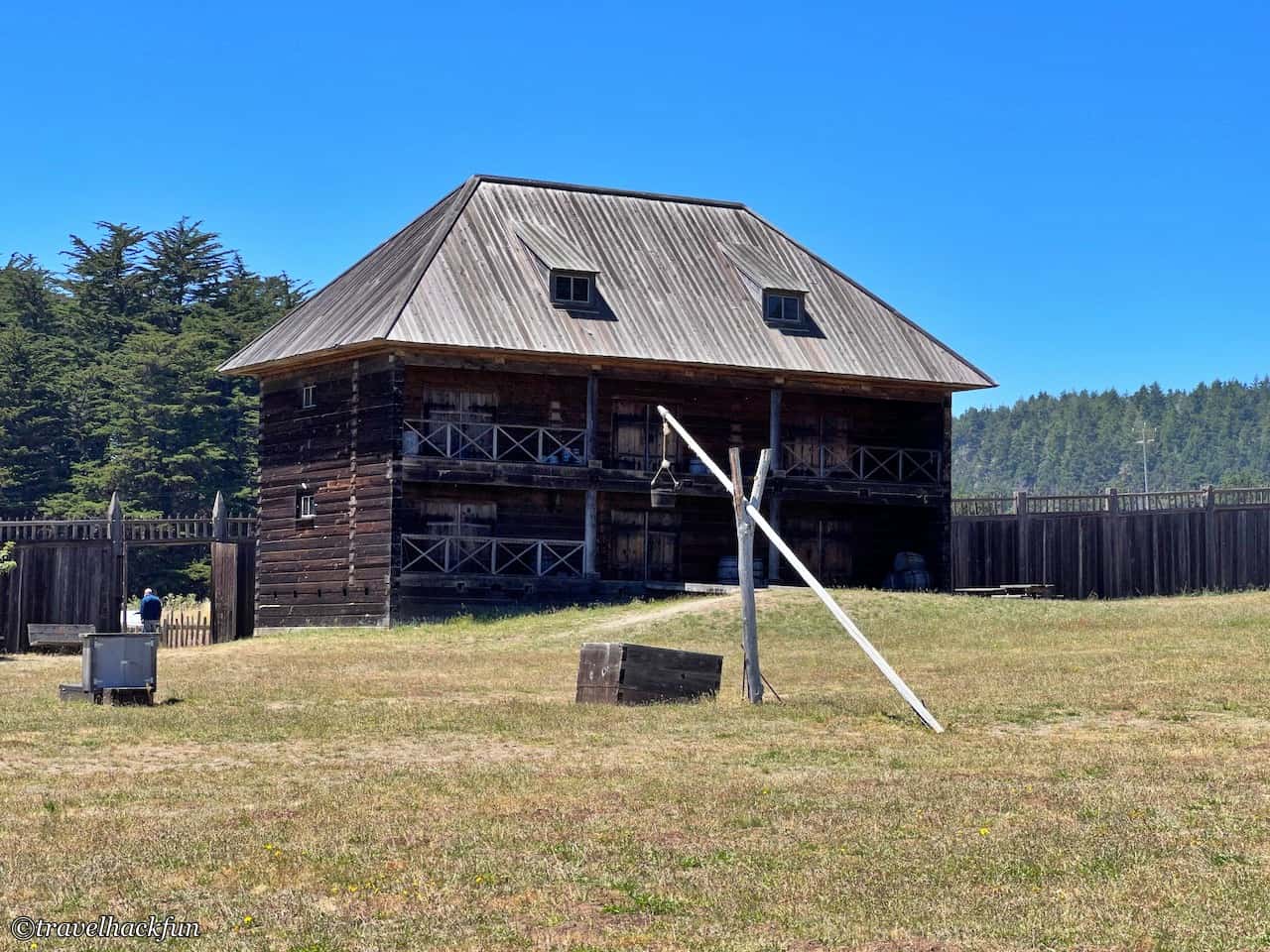
Sandy Cove
Sandy Cove, a beautiful bay just outside the city gates, is where ships used to sail. As mentioned earlier, only people of Russian blood lived in the city, while other craftsmen, such as Alaskan Natives, settled in a small village on the grassy area in front of the cove.

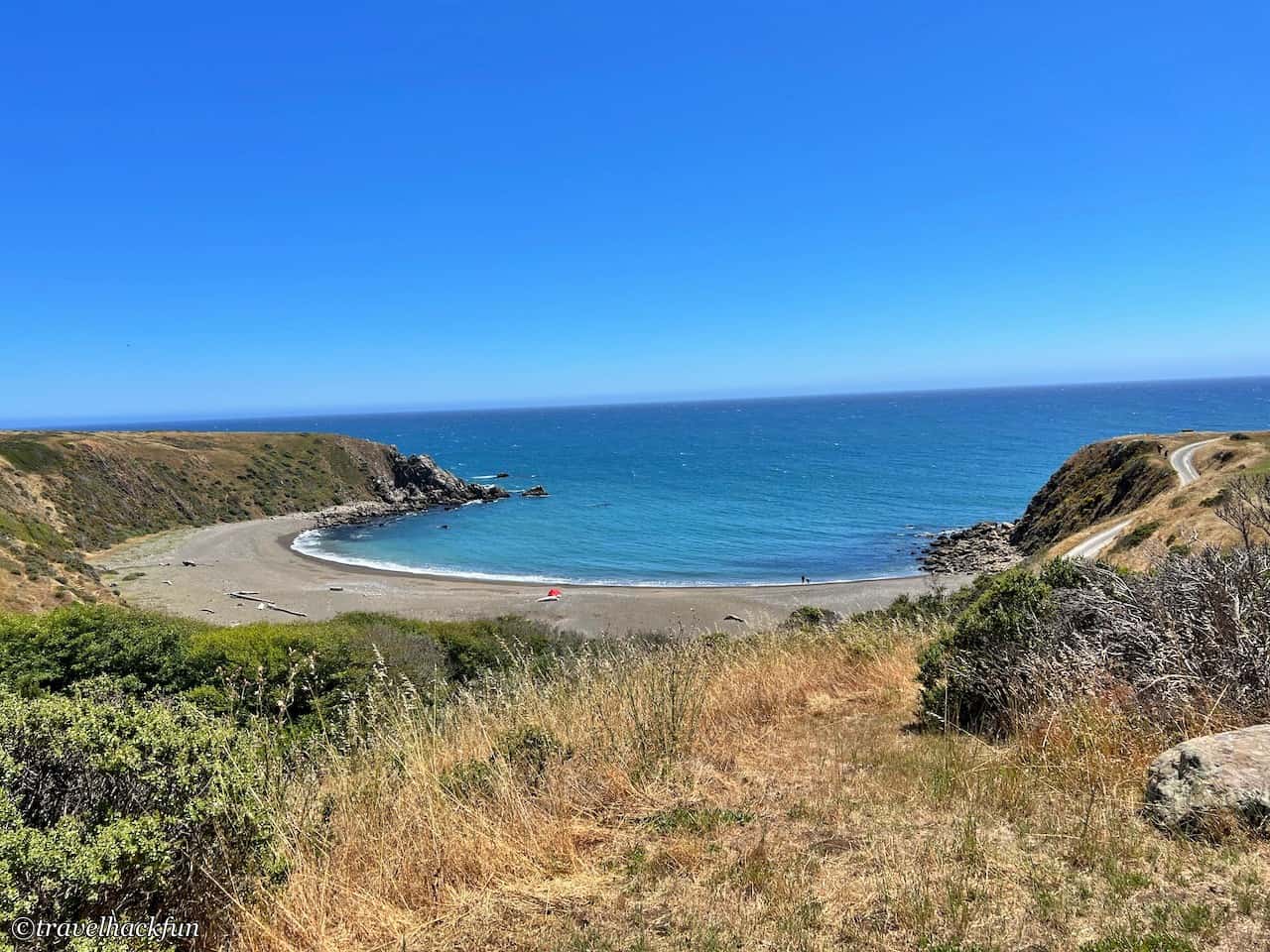
The Call House
Turning right from the main road in front of the bay, not far away is the Call house, which seems to be more American style, because it was built by Call's family when they moved out later due to lack of space. It is said that the Call family, with nine children, originally lived in The Rotchev House in the city after taking over the business, but later when the population increased, there was not enough space, so they moved out of the city and built a large house. For the next thirty years, the town was used entirely for tourist purposes.
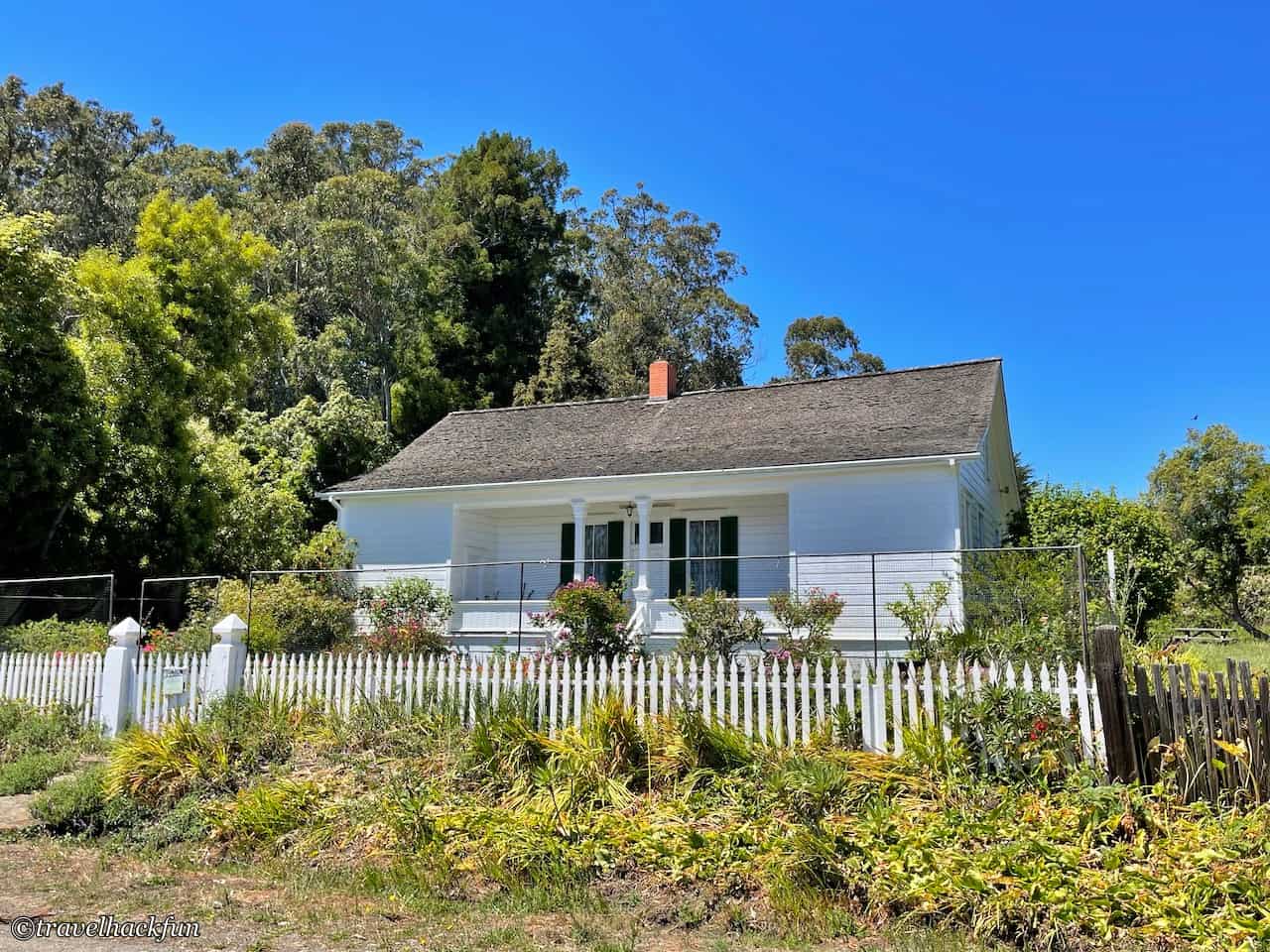

Behind Call house, there is a Call house trail, from which you can walk back to the Visitor Center. There is a cypress forest on the way.

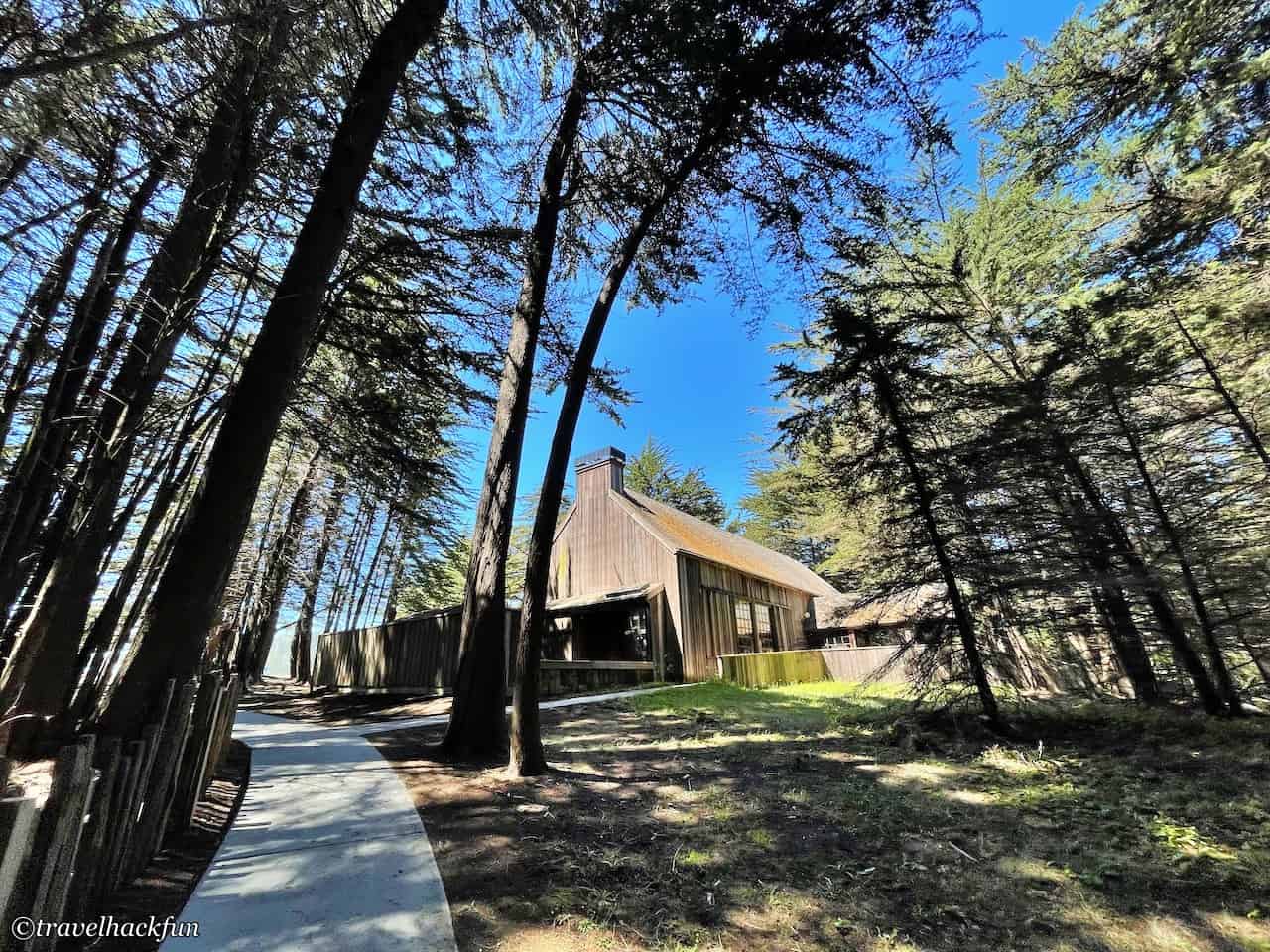
California's first windmill
At the other end of the parking lot is another Russian creation, California's first windmill. Built in 1814, this windmill was a technological advancement for its time.
![[Northern California Historic Sites] Fort Ross State Historic Park | Russian Fortresses on the Sonoma Coast | California's First Windmill | The Day California Was Colonized by Russia? 46 fort ross, fort ross, fort ross state park, fort ross state historic park, fort ross california 45](https://blog.travelhackfun.com/wp-content/uploads/2022/07/batch_IMG_8235.jpg)
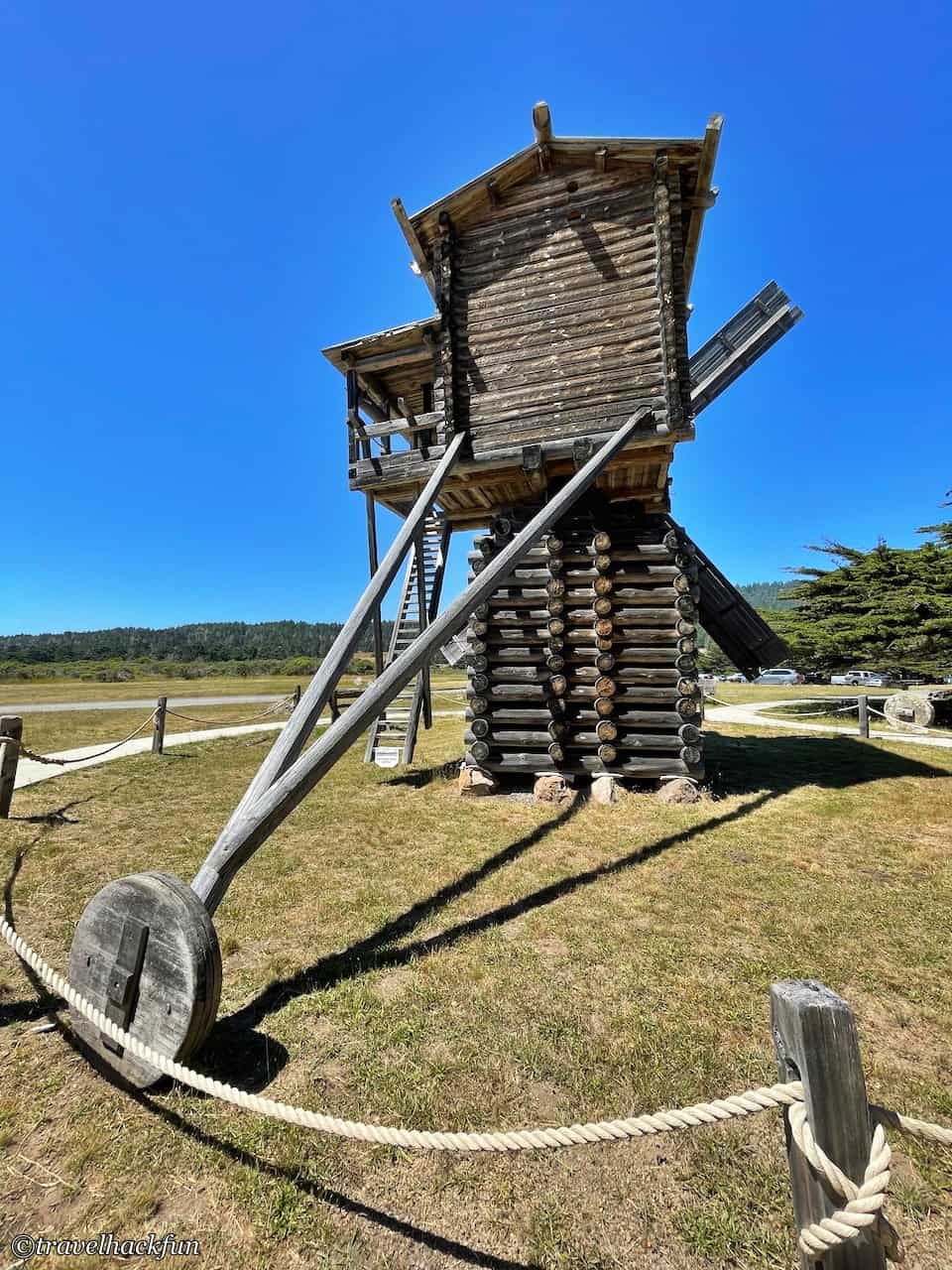
Thank you for visiting our website.
All the content on this site is original and shared with the purpose of providing valuable information. We sustain the operation of this site through a small amount of advertising and sponsored links. If you click on links to third-party merchants on our site and make purchases, we may receive a portion of the sales as a commission. If you click on links to third-party merchants on our site and make purchases, we may receive a portion of the sales as a commission.
Find more posts on a map Here.
My recommended resources for hotel bookings.
Recommended travel credit card for US-based travelers
Travel with just a backpack!
Buy me a coffee and support my contents!
If you are interested in quoting this article or using any part of its content and images on your website or publication, please contact us via email to request permission.